 | E-mail to Birds Korea |
 | KWBS |
in the Region
 | The Oriental Bird Club |
 | BirdLife International (Asia) |
April
One of the very best birdwatching months! Cold days and nights (lowest day maxima of ca 12°C) gradually warm through the month (reaching the low 20s°C by month’s end), and dry spells interspersed with 1-2 days of heavy rain and stormy conditions produce great birding towards month’s end.
Early in the month, late Hooded Crane move through while shorebird numbers and persity start to build up. While the concentrations of 200,000 shorebirds at Saemangeum are no longer to be found since seawall close there in 2006, internationally important concentrations of species like Great Knot and the Critically Endangered Spoon-billed Sandpiper, Nordmanns’ Greenshank and the highest known concentrations of osculans “Far Eastern Oystercatcher” can still be found at the adjacent Geum Estuary. Other Korean specialties include Chinese Egret from mid-month, and Black-faced Spoonbill in small groups along the west coast. This latter species has a world population of only 1500 or 1600! While early April sees species like Brown-headed Thrush and Japanese Robin in very small numbers in the far southwest and southeast, mid-April is marked by the first large passerine arrivals and spring overshoots, with good counts possible of Blue-and-white, Narcissus and Yellow-rumped Flycatchers, and Tristram’s and Yellow-browed Buntings. Late in the month, 100 or more species a day are possible on the outer islands like Heuksan and Gageo in the far south, Eocheong off Gunsan, and Socheong in the far northwest.
In more than one recent year, highlights have included Pied Wheatear, Caspian Tern, Japanese Night Heron, Black-headed Bunting and Himalayan Swiftlet. Korean firsts for April include a Northern House Martin and Red-breasted Flycatcher on Eocheong in 2003, a Paddyfield Warbler on Hong Island in 2004, a pandoo Blue Rock Thrush in 2005, and a Claudia’s Leaf Warbler on Socheong Island in 2009.
(The following records are a compilation of our own sightings and records sent in by other observers. As well as being posted on the Birds Korea website(s), selected records are also forwarded to other Korean-language birding websites; records of threatened species are arranged and forwarded to Birdlife International and national authorities when appropriate; flag images and records are passed to bodies responsible for their coordination throughout the flyway; and all records sent to us are used to compile annual reports and to support the evolving understanding of the status of many of Korea’s birds.)
Gageo Island, April 30
A rough crossing; heavy swell and a tossing deck made viewing difficult; the only bird of note was a close-by Yellow-billed Loon. On Gageo, good diversity but overall rather small numbers – highlights were single digits of Dusky, Pale-legged Leaf, Eastern Crowned, and Yellow-browed Warblers; a few Asian Brown, Narcissus, and Blue and White Flycatchers and a single Taiga Flycatcher. A few Brown-headed Thrushes and one or two Pale and Dusky Thrushes showed or sounded, two Chinese Pond Herons and an Intermediate Egret appeared to arrive off-ocean and into the quarry where a Richard’s Pipit associated with the long-staying band of Red-throated and Olive-backed Pipits. Other birds around 1-gu: Little, Yellow-browed, Chestnut, and Chestnut-eared Buntings (all but the first in single digits), a Wryneck, a White-breasted Waterhen,a pair of Pacific Golden Plovers, a Little Whimbrel, several Chinese Grosbeaks, the long-staying flock (12) of Greater Short-toed Larks, and a (female) Mandarin Duck.

Heuksan Island, April 30
On Heuksan, a quick 54 species seen in 3 hours on the afternoon of the 30th: highlights included personal spring firsts 1 Grey-streaked Flycatcher, Japanese Lesser Sparrowhawk (which seemed remarkably larger than usual but nevertheless showed all the correct features), a Garganey and Dark-sided Flycatcher. Also noteworthy perhaps, a young Grey Thrush, 4 Greater Short-toed Lark,and a Brown Hawk Owl. Sadly the small wetland near the harbor that has regularly hosted various rarities is now being used as a trash tip, and the island habitats are suffering various construction projects and extra disturbance.
Socheong Island, April 29
A survey of the whole island found 103 species, with most numerous Grey-backed Thrush (with a total of 652 counted, including both grounded and departing birds), Black-faced Bunting (283), Olive-backed Pipit (ca 200) and Yellow-browed Warbler (168), with other highlights including 28 Wryneck, six Oriental Scops Owl and a Little Whimbrel. Unsurprisingly, several birds appeared exhausted – including a Tristram’s Bunting which remained sunning itself on a track.
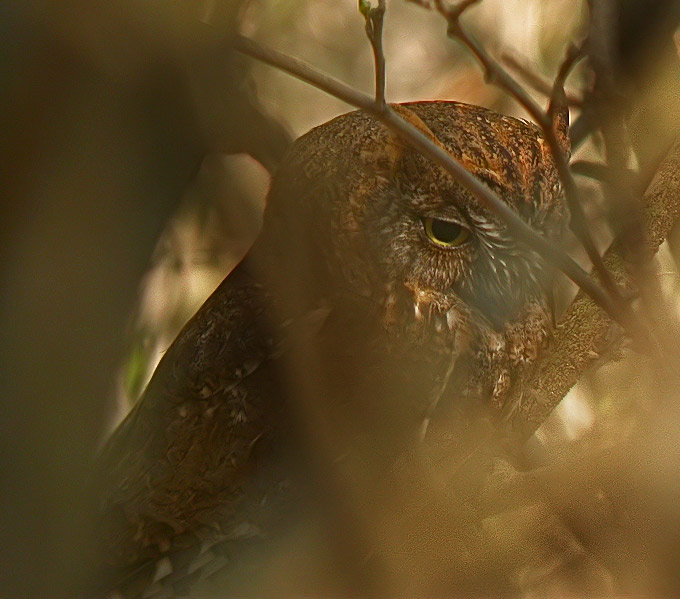


Gageo Island, April 29
In fine spring weather, 82 species recorded. Highlights included a good view of the Black Redstart, 3 Amur Falcon, a White-breasted Waterhen and a White-shouldered Starling.
Other windfalls consisted of a Kentish Plover, Mongolian Plover, 1 Chinese Bulbul, a White's Thrush, 1 Latham's Snipe, a Red-throated Loon and a Common Moorhen (which quite unusually floated on the sea).
Also of interest, the Whiskered Tern pair are still present: also 16 Greater Short-toed Lark, 2 Eurasian Wryneck, the Temminck's Stint, a late Rustic Bunting, 5 Narcissus Flycatcher (one male of which featured greenish tones to the mantle), the long-staying Sharp-tailed Sandpiper, and 23 Eastern Yellow Wagtail (which included 2 taivana). Most abundant passerines on the island are Olive-backed Pipit (87), Little Bunting (67) and Black-faced Bunting (60)- which now have a higher proportion of females amongst than a week before.
In other news, I had several encounters with the decidedly fast and elusive Siberian Weasel Mustela sibirica: there seems to be a strong population on the island.



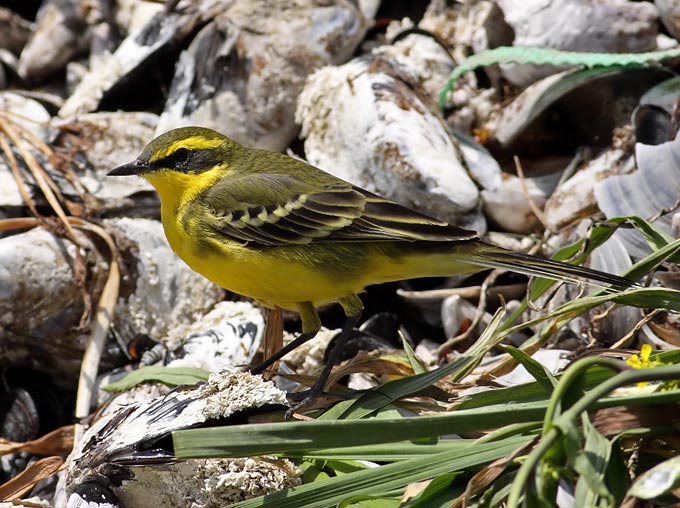


Mokpo Namhang Urban Wetland, April 29
First discovered by Dr. Kim the day before in the rainy afternoon a leg flagged Red Knot was again seen during the daily site visit.

Socheong Island, April 28
Personally, one of or probably THE most memorable, bizarre and in some ways bitter-sweet birding afternoon’s ever. Heavy rain until 1400hrs followed by a dull overcast resulted in a large increase in grounded migrants, with for example 370 Little Bunting counted (including a single flock of 250). At about 1630, as visibility started to improve ahead of a cold front, a much more massive movement got under way, with ca. 7,000 birds (presumably arriving and) trying to leave the island from the east end in only one hour, including an estimated 3,000 Yellow-browed Warbler. At the peak of the movement, as rain started to fall again, over 800 passerines could be counted in a single scan of the horizon, all heading east, with species like Pied Harrier (one) and Great Bittern (2) also mixed in. Over 50 Yellow-browed Warbler were counted passing close-by each minute, with several hundred of these dropping down to join species like Yellow-browed Bunting and Wryneck which were already trying to feed along the roadside. By 1720, as the rain started to turn to driving snow, the temperature dropped to probably only 2C – exceptionally cold for the time of year, and surely not expected by species like Ashy Minivet, White-throated Needletail, Black-naped Oriole and Black-winged Stilt which were also all caught up in this system. While many birds appeared to have departed for the milder mainland, others stayed – with for example several moribund buntings and one group of five or six Yellow-browed Warbler watched going to roost together in a small cavity, in order to share body warmth.
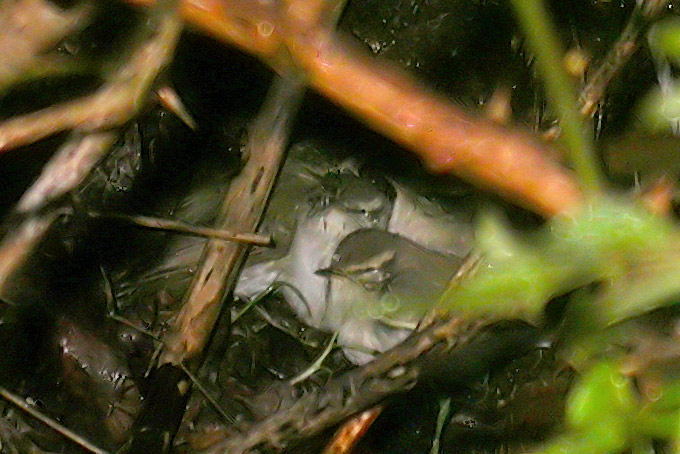
Gageo Island, April 28
Mist and rain in the morning gave way to sunshine in the afternoon, however strong SE winds pinned most birds down in thick cover. Of 68 species, most noteworthy was an Oriental Plover and 2 Whiskered Tern (another first record for the island). Also new in town were 2 Sand Martin, a Pallas's Leaf Warbler, 1 Western Osprey, 2 Great Crested Grebe, 1 Red-billed Starling, a close inshore Pacific Loon, a Grey-tailed Tattler, 1 Temminck's Stint, a Common Greenshank, a Black-capped Kingfisher and 1 Daurian Redstart.
The regular specials included 1 Chinese Blackbird, a Blyth's Pipit, 1 Little Whimbrel and 10 Greater Short-toed Lark.
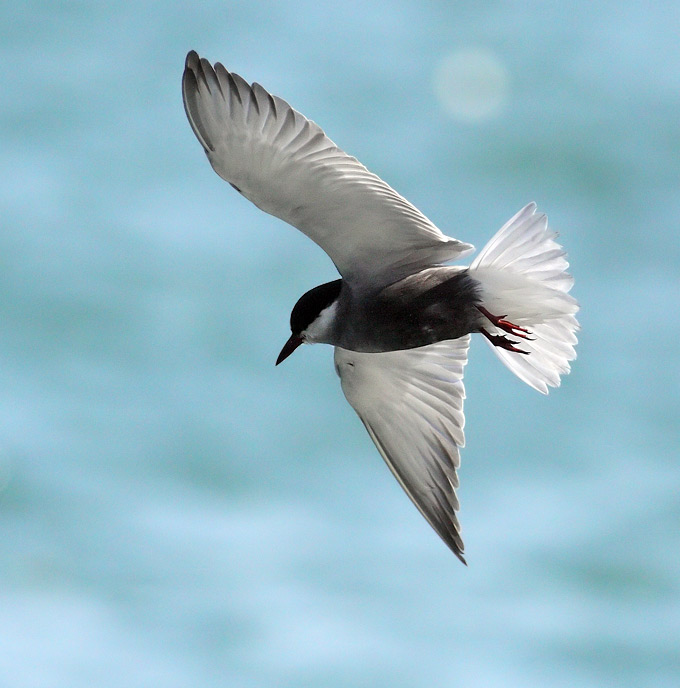


Gageo Island, April 27
Yesterdays rain, south-westerly winds and a full moon combined to produce the best day of the spring thus far, with 81 species logged. Undoubted highlight, a presumed (and only second record for Korea) Chinese Flycatcher: comments regarding I.D from experienced observers are welcomed. Also of especial note, an Oriental Plover, a female Black Redstart and an Oriental Pratincole. Of especial note, a Long-billed Plover is the first record for this Island: from 1-Gu to 2-Gu were 25 Greater Short-toed Lark ( a record high count?). Still present was a Eurasian Wryneck and 1 Blyth's Pipit.
Also new on the scene was a Black-winged Stilt, 3 Chinese Pond Heron, 9 Yellow-breasted Bunting, 3 Pacific Golden Plover, an Oriental Reed Warbler, 3 Yellow Bunting, 21 Yellow-browed Bunting, 2 Taiga Flycatcher, 2 Yellow-rumped Flycatcher, a Pacific Swift, 4 Ashy Minivet, a Grey-faced Buzzard, 3 Varied Tit, 2 Chestnut Bunting, a Striated Heron, an Oriental Turtle Dove, a Grey Heron, 2 Japanese White-eye, and a Richard's Pipit. I was also joyed to encounter a Black Woodpigeon, which proceeded to give long, lowing calls from the evergreens.
Exhausted Barn & Red-rumped Swallows basked in sunshine on the road, too tired to even flinch as trucks drove over them. Most missed the wheels, although 2 were unfortunately run over. Among the Barn Swallows, a single peach-coloured individual was obviously different, the subspecies of which is apparently not yet resolved: all the others have pure white underparts. In other news, I also noted 6 Narcissus Flycatcher and 21 Grey Wagtail: the single Whimbrel is still picking his way through the weed patch.

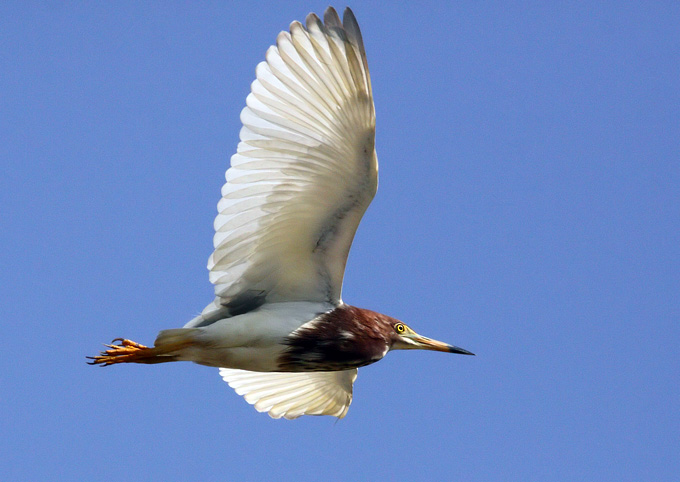

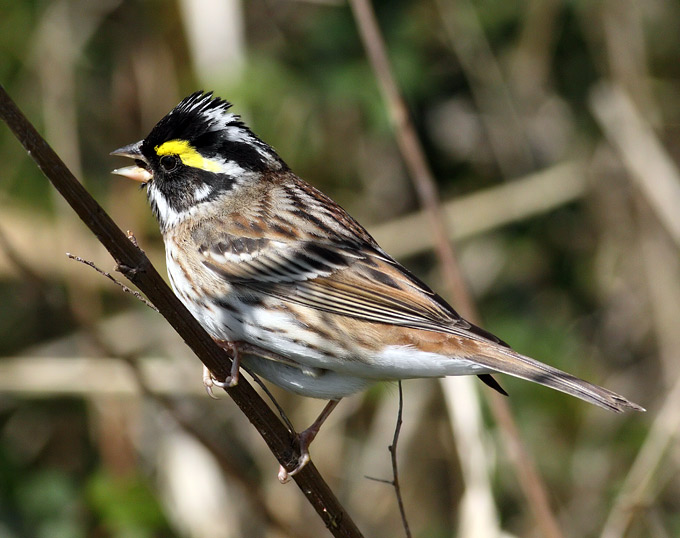
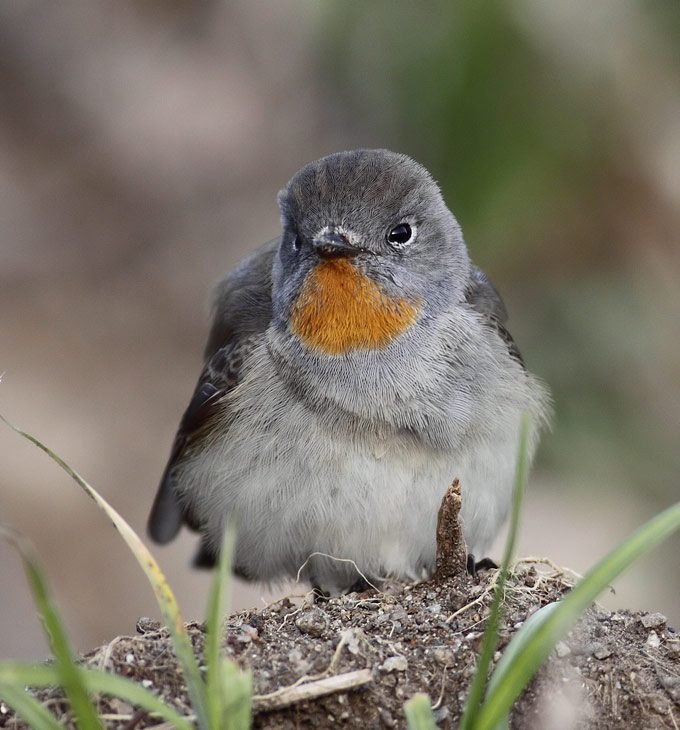

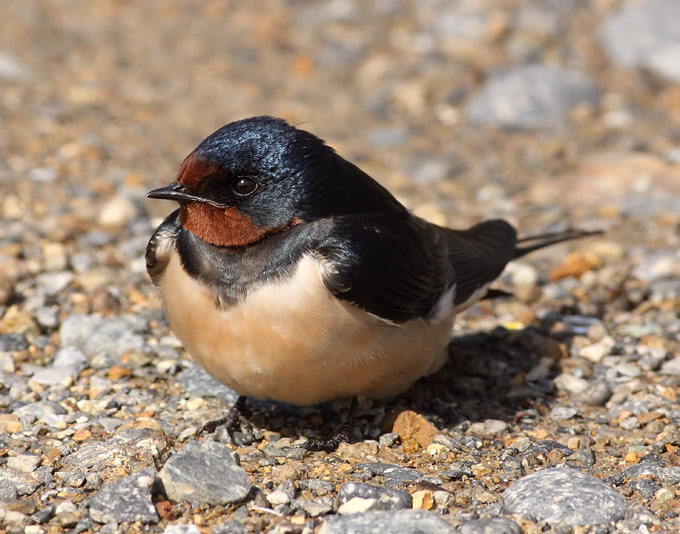
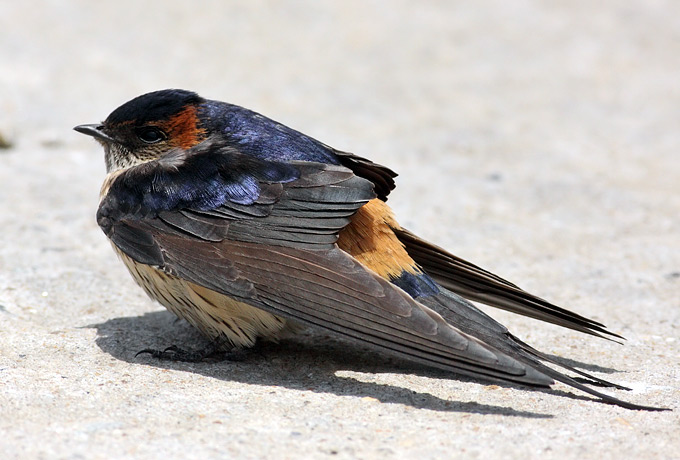


Mokpo Namhang Urban Wetland, April 27
After Monday with heavy rain and strong winds the sky was sunny but still very windy. The mornig visit to the site showed several new arrivals: 8 more Ruddy Turnstone, now 10 Terek Sandpiper, more Red-necked Stints (c. 40), one Sharp-tailed Sandpiper and a new group of Bar-tailed Gotwit, today 117 in total. Today was the second time after April 14th to discover a white leg-flaged Godwit from New Zealand; in total already the 29th flag record of this spring for the site. While the number of winter visiting ducks has declined, only 25 Common Shelduck and less than 100 Common Teal as well as very few Mallard , Spot-billed Duck, Falcated Duck and Northern Shoveler very seen. Among the ca. 60 Eurasian Wigeon a single American Wigeon was well observed which was first discovered by Dr. Kim on Sunday 25th.



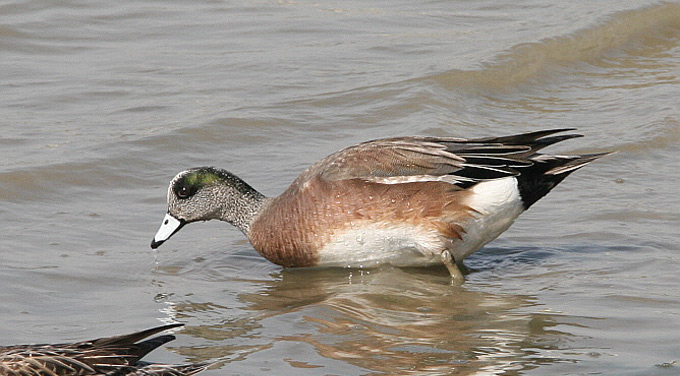
Socheong Island, April 26
Heavy rain from 9am prevented a full survey with obvious evidence of a lot of overnight departure, and highlights limited to two Grey Thrush (an adult male and a female), three or more Brown-headed Thrush, a rather confiding Japanese Sparrowhawk and the first Common Rosefinch of Socheong’s spring.
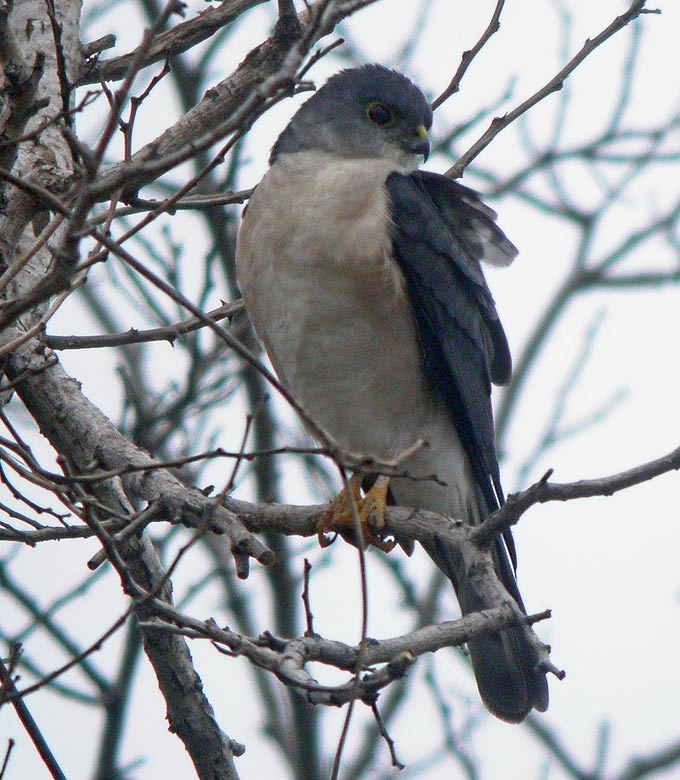
Gageo Island, April 26
Low mist and unrelenting heavy rain, (although with a promising SW wind) made surveying impossible, although a watery two hours added 3 species to my island total - a Common Kingfisher, 2 Pale-legged Leaf Warbler and a Mongolian Gull.
Signs of movement were a flock of White Wagtail passing through low overhead, and an apparent influx of Brown-headed Thrush - with 7 in the quarry that were not there the day previous. A Siberian Blue Robin was skulking under the shipping containers (- as I failed to mention earlier, 3 were seen yesterday). In the downpour Barn and Red-rumped Swallows were left to soak on the wires, although some clustered around warm lamps inside the warehouse, the door of which had been left half-open.
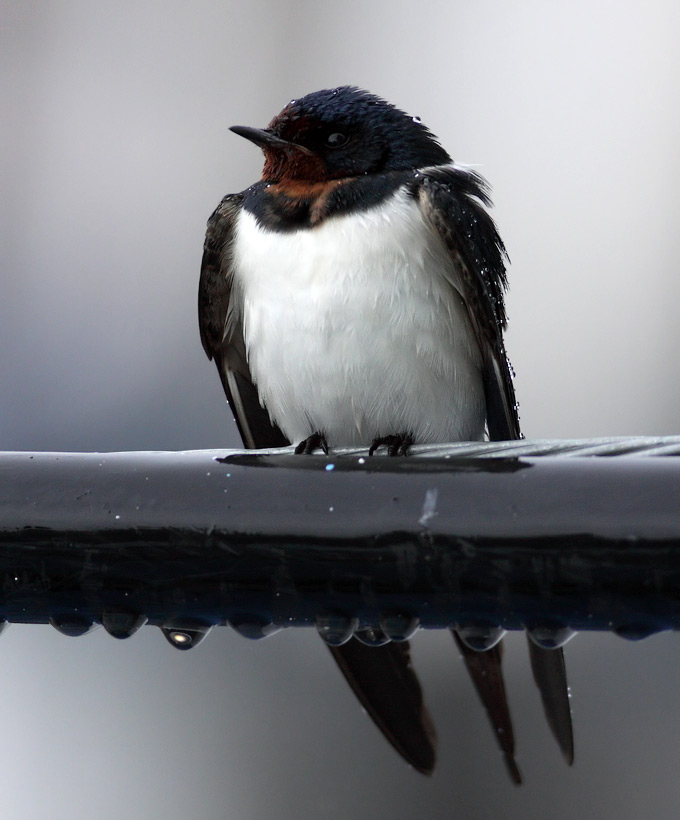

Socheong Island, April 25
Survey limited to the afternoon, during which a good arrival took place. Most obvious among the new birds in were Siberian Blue Robin (with 32 in the limited area surveyed), with new for the island’s spring single Latham’s Snipe, Brown Shrike and Chinese Grosbeak and three Pale-legged Leaf Warbler, with outstanding highlights an adult male Citrine Wagtail and some snippets of a song given that (although unrecorded) sounded identical to last year’s Claudia’s Leaf Warbler.
Jeju Island, April 25
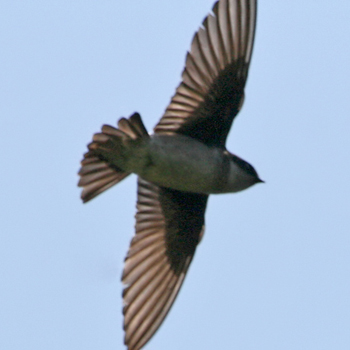
A great sunny day for birding in a Seogwipo park. About 40 Barn Swallows and perhaps 5 Red-tailed Swallows gorged on clouds of
flying insects over the river. Ten Asian House Martins were mixed in with the Swallows. Looking at my lists, I spotted a similar mix of Swallows and Martins in the same location on May 3, 2009. Several Pacific Swifts patrolled at a higher altitude. Only 1 Brown-headed Thrush was seen, along with several Pale Thrush and a sharply-marked but elusive male Eye-browed Thrush. Three male Narcissus Flycatchers fed from branches near the river, and chased each other around. Three additional Narcissus Flycatchers were seen in another Seogwipo park. The cumatilis Blue-and-white Flycatcher remains in the park. At one point a 'mystery bittern' flashed past. I didn't get a good look, but if I had to guess, I would say it was a Yellow Bittern. Also in the park: a Common Kingsisher, 2 Striated Heron, 2 Bull-headed Shrikes, a half dozen Olive-backed Pipits, a pair of Siberian Stonechats, several Eastern Crowned Warbler, and an Asian Stubtail. A Cattle Egret was seen in a nearby farmer's field.
On the same day my friend Matt French saw some interesting birds on the west coast, north of Moseulpo. He spotted a Far Eastern Curlew, several Black-winged Stilts, Cattle Egrets, Coots, and Wood Sandpipers.



Gageo Island, April 25
On the calm sea crossing, noteworthy was a Yellow-billed Loon and a 3 flocks of Eastern Great Egret over the waves. Afternoon found the island jammed with birds- a diversity of 66 species. Chief of them, a lone Little Whimbrel, a significantly large flock of 22 Greater Short-toed Lark, another Yellow-billed Loon in the bay (which I gather is the first to have been seen from Gageo-do itself),1 Eurasian Wryneck, 1 Chinese Blackbird, and a Blyth's Pipit.
In the harbour, a Dunlin, 1 Great Knot, 1 Sharp-tailed, 1 Common, 2 Wood &1 Terek Sandpiper, a Red-necked Stint,1 Temminck's Cormorant, 72 Black-tailed, 14 Taimyr and 74 Vega Gull. On the sea, a Pelagic Cormorant and 7 Arctic Loon.
Continuing through 1-gu only, 43 Barn and 9 Red-rumped Swallow, 2 Asian House Martin, 10 (lugens, leucopsis & ocularis) White, 3 Grey and 1 macronyx Eastern Yellow Wagtail, 5 Japanese Bush, 5 Dusky, 8 Korean Bush, 2 Eastern Crowned and 2 Yellow-browed Warbler: 15 Red-throated, 3 Buff-bellied & 21 Olive-backed Pipit. Also 2 Chestnut-eared, 4 Yellow-throated, 3 Rustic, 3 Little, 11 Black-faced (inc. 1 personata) & 1 Tristram's Bunting. of the ardeidae, 1 Intermediate, 1 (dead) Little, 1 Cattle and 1 Western Great Egret and a Black-crowned Night Heron. In the bushes, 3 Asian Brown, 1 Blue-and-White & 2 Narcissus Flycatcher. 5 Brown-headed, 1 Pale, 1 Eyebrowed, 2 Dusky & 3 Blue Rock Thrush.
Also present, 15 Siberian Stonechat, 9 Brown-eared Bulbul, 17 Red-flanked Bluetail, 2 White-cheeked Starling, a Whimbrel, a Common Teal,a Siberian Rubythroat, 2 Asian Stubtail,a calling Brown Hawk Owl at dusk, 18 Brambling, a Hoopoe, 5 Eurasian Tree Sparrow and a Peregrine.


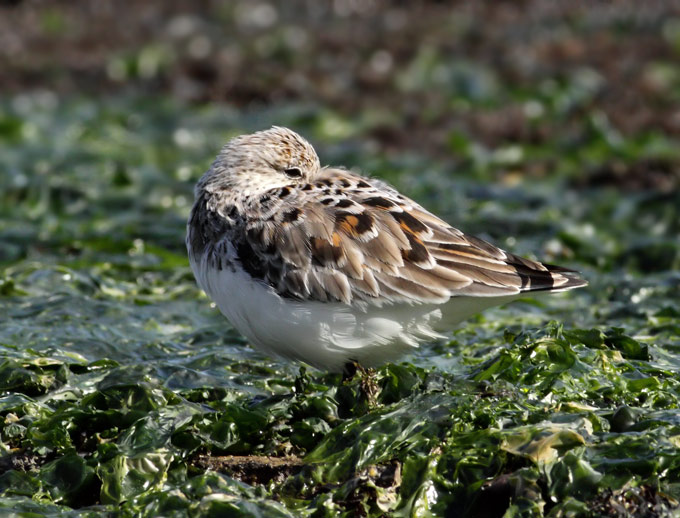

Socheong Island, April 24
A survey of the west of the island found 67 species, with a further four additional species found on North Point. Most numerous were Brambling (130), Dusky Thrush (95) and Black-faced Bunting (60), with highlights the first Hume’s Leaf Warbler of Socheong’s spring and two Yellow-bellied Tit (first recorded in the ROK in only 2005, the species is now increasingly recorded during migration along the west coast and apparently has even bred).
Taejongdae, April 24
A superb visit with a wide range of quality migrant species. The unsettled and showery weather of the latter part of the week gave way on Saturday to clear, sunny and cool conditions, and there had evidently been a significant arrival of migrants in the area since Tim Edelsten's midweek visit. The best bird was perhaps the Ashy Minivet seen shortly after we arrived in the gully, it showed briefly in the canopy but unfortunately could not be relocated later. A total of three Japanese Robins (2 females, one male) were present at different locations along the gully, these birds were generally elusive throughout most of the afternoon and showed best in the evening. An excellent total of six thrush species were seen. There were perhaps 8 Grey Thrushes in total, including a male singing intermittently in the evening. The Grey Thrushes were very relaxed and secure in their behaviour, allowing a fairly close approach, unlike the many Pale Thrushes also present. It is difficult to estimate the number of the latter species, as in every area of woodland they could be seen and heard turning over leaf litter. We saw at least 25 individuals, but there could easily have been hundreds present in the Taejongdae area, much of which is closed off to public access. Oddly, a male Eyebrowed Thrush was present in exactly the same place along the gully as the one we saw on several occasions in early April. Having not seen it during a thorough search of the gully two weeks ago, I can only assume that this bird was a new individual. This bird was somewhat less skulking than the previous one, and rather territorial - on one occasion it was seen to chase away a Grey Thrush from its favoured feeding area.
Nearby, a female Grey-backed Thrush was seen, and late in the afternoon a White's Thrush put in an appearance at the bottom of the gully close to the temple, in exactly the same spot and at the same time of day as the one we saw two weeks ago. This could conceivably be the same individual White's Thrush that we have been regularly seeing in the gully since late March - perhaps it wintered in the area?
Completing the thrush roll call, above the top of the gully, a splendid male Brown-headed Thrush fed in leaf litter next to the recreation area.
Three Blue and White Flycatchers (including two males) showed conspicuously throughout most of the afternoon in the lower section of the gully. A minimum of three Eastern Crowned Warblers also favoured this area. At the top of the gully, near the picnic tables, a superb male Narcissus Flycatcher was present. Also in the gully, a small flock of late Bramblings (3 male, 1 female) showed well all afternoon - two of the males were in full breeding plumage. Single Grey Wagtail and Winter Wren rounded off an excellent afternoon for migrants.
Gageo-do, April 22-24
The 22nd had light rain in the morning: a circuit of 1-gu showed a few new birds in. On the mossy slab, some new shorebirds: 2 Terek Sandpipers, 1 Sanderling, 1 Sharp-tailed Sandpiper; near the bamboo grove, a beautifully marked Long-tailed Shrike. Other new and notables were 5 Cattle Egrets, several Little Egrets and more Intermediate Egrets, the Little Whimbrel still, and a Siberian Rubythroat. A dark note about the egrets: the last 2 days, I have found that the 3 Intermediate Egrets using “the ditch” have, one by one, declined and died. They make it – against so many odds – to land, find Gageo’s last remnant of wetland, shelter there, but find no food, for the stream is almost entirely concreted and seems to hold not fish nor frog. The exuberantly plumed individual in the photograph from the 19th is one of the dead.
Later on the 22nd, the rain ending, I returned to 2-gu. Along the way, several Dusky, Pale and Brown-headed Thrushes; 2-gu itself was rather quiet, with a single Japanese Yellow Bunting, a few Black-faced Buntings (with one personata amongst), a Grey-faced Buzzard, a Common Kestrel, a calling Oriental Scops Owl, about a dozen Olive-backed Pipits, a few Buff-bellied Pipits, and several Bramblings.
The 23rd dawned mostly sunny. A few warblers appeared: single Pale-legged Leaf and a few Dusky Warblers and a small increase in Asian Stubtails The first Oriental Reed Warbler of the season set up vocal shop near the trash tip. Other new birds included 2 Whimbrels, a new Great Knot, a Little Ringed Plover, a Common Kingfisher, a Grey-backed Thrush, a calling (and quite early) Northern Hawk Cuckoo, a Golden Plover, 2 Wood Sandpipers, a calling Oriental Cuckoo, a Striated Heron and a Chinese Pond Heron. 4 Chestnut-eared Buntings in brilliant spring plumage shared the quarry with the flock of Red-throated Pipits and several Little Buntings. Narcissus Flycatchers around the village have increased to 5, and Blue and White Flycatchers to 3. Barn Swallow numbers are up to about 50.
The morning of the 24th before the boat showed a steady rise in temperature and (in limited time surveying) a trickle of new birds: a Taivana Yellow Wagtail, a swelling (15 now) flock of Greater Short-toed Larks, and – excellent valedictory bird – a female Black Redstart somewhat briefly but close-up at the quarry.
The return ferry (outside access only to Gageo) was relatively uneventful, with a small flock of Ancient Murrelets, several distant Diver sp. and a single Streaked Shearwater.
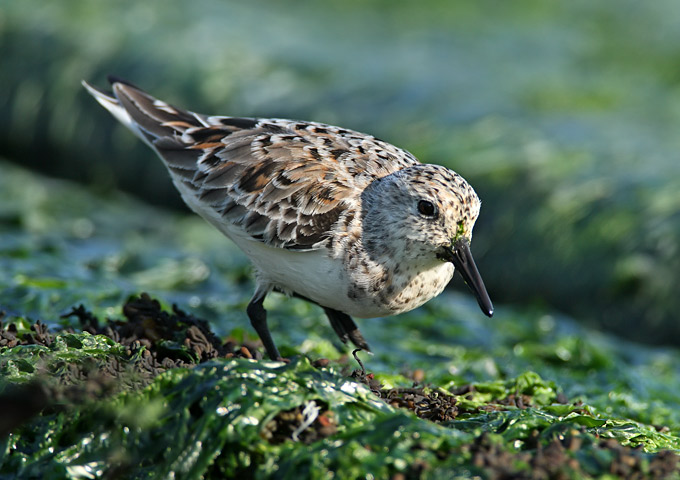
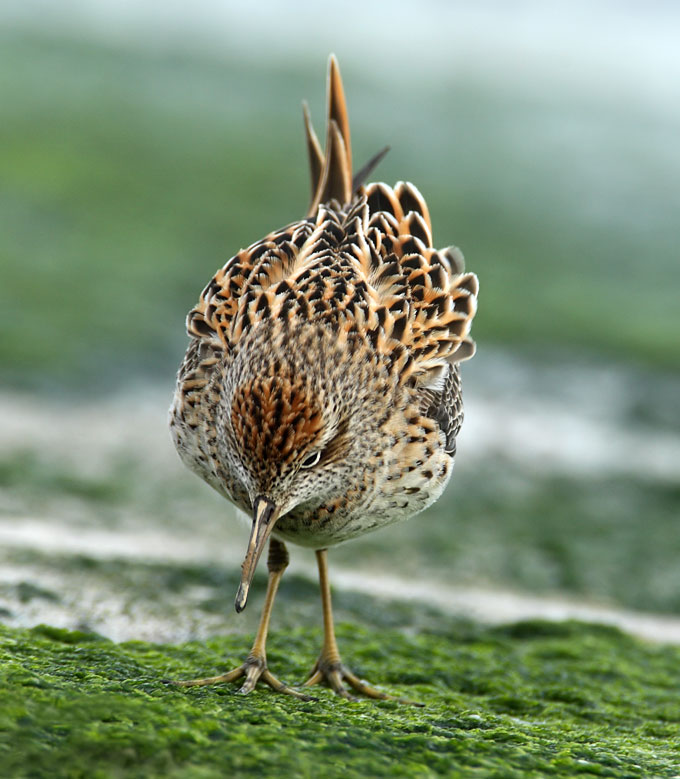



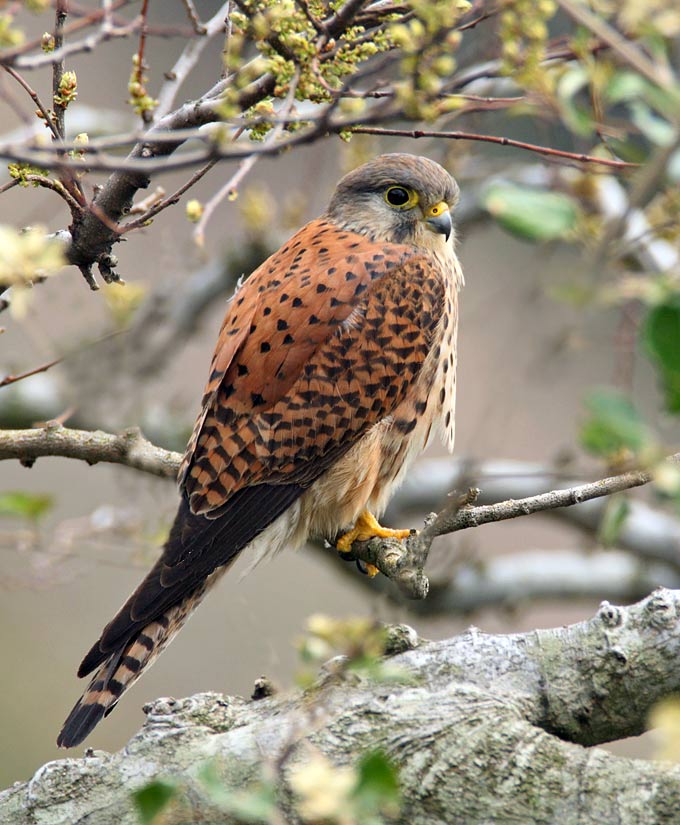

Socheong Island, April 23
A full island survey in decent weather with a high reaching a spring-like 13C, recorded 77 species, with a decent arrival of diurnal migrants in the afternoon. Most numerous species recorded were Brambling (285), Olive-backed Pipit (102) and Red-flanked Bluetail (83), with species of most note a Sharp-tailed Sandpiper, five Brown-headed Thrush, three Wryneck (one of which was superbly approachable) and another Second Calendar-year male Pallas’s Rosefinch (this one appearing much brighter than yesterday’s bird).

Ganseong, x creek and rice field, April 23
I'm beginning to worry that I don't get enough exercise. Today I started taking bird photos from my apartment when I got home today. There was an Eastern Great Egret, a Grey Heron and a couple of Spot-billed Ducks in the newly ploughed and flooded rice field near my apartment building. The heron flew over to the creek and I saw the egret catch 3 loaches in the rice field and take them to the dry bank before engaging in the difficult task of swallowing them. It hard for a bird to swallow something thats wrapped around its bill.
Interesting observations over the last week or so include the first Black-faced Buntings, Common Sandpipers, Hoopoes and Pale Thrush for the year, and numerous Buff-bellied Pipits in summer plumage. Grey-capped Greenfinches and Vinous-throated Parrotbills are moving around in pairs.

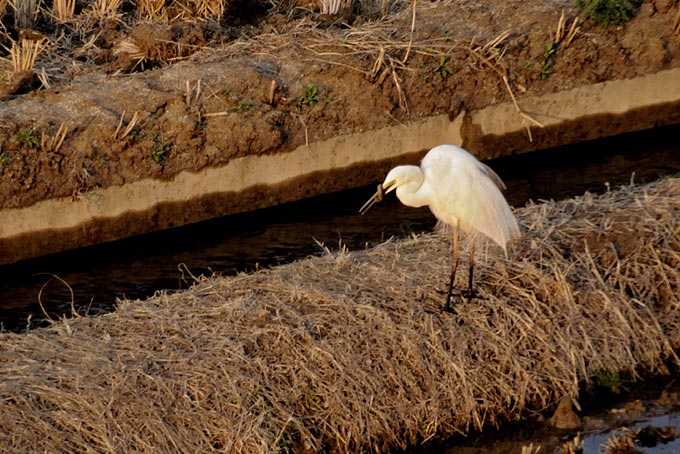


Socheong Island, April 22
In dull and wet weather, highlight was a female menzbieri Bar-tailed Godwit on the beach and an extremely late Pallas’s Rosefinch.
Busan, April 21
On the only small stretch of stream left natural and unconcreted at Taejongdae, 2 Japanese Robin: notably nearby, a Narcissus Flycatcher and 2 Grey Thrush.

Gageo Island, April 19-21
Rain began before dawn and continued heavily until evening. A quick circuit at dusk revealed little obvious influx, with a Cattle Egret newly in, 2 Red-breasted Mergansers near the harbor, 2 Intermediate Egrets in the weedy ditch, and slightly larger numbers of Red-throated Pipits at the quarry.
April 20. Rain at dawn, gradually subsiding to heavy overcast by around 8am. Again, few new birds; the morning’s highlight was a Little Whimbrel near the main village. A Red-throated Loon and 2 Great-crested Grebes swam the surf near the harbor. Narcissus Flycatchers and Brown-headed Thrushes seem slightly more numerous than before, with 5 and 6 respectively. By midday, the sun was out and the temperature suddenly balmy.
The afternoon took me to 2-gu (by way of a much-appreciated ride offered by the district office). There I found another Little Whimbrel, one Hoopoe, small flocks of Far-Eastern Skylarks, Greater Short-toed Larks, Bramblings, and Red-throated, Buff-bellied, and Olive-backed Pipits, an Asian Stubtail, a Siberian Blue Robin, a Chestnut-cheeked Starling, 2 Pacific Swifts, a Chinese Blackbird, several each of Black-faced, Rustic and Yellow-throated Buntings, and single Japanese Yellow and Chestnut-eared Buntings. I heard but did not see some Japanese Whiteyes and heard or saw small numbers of Dusky Thrush, Pale Thrush, and Brown-headed Thrush. A Grey-faced Buzzard flew by.
In the evening back at the main village, a Siberian Rubythroat was the only new find. The Asian Brown Flycatchers behind the minbak have increased to 3, and the Narcissus Flycatchers to a pair.
The 21st began with heavy fog and a drop in temperature, turning to steady rain by midday: very few new birds in evidence, with an overall drop in numbers. I found a single Pallas’ Reed Bunting above the quarry, a Little Grebe in the harbor and the 1-gu Little Whimbrel again.



Socheong Island, April 20
Rain and drizzle through until dawn, followed by fog banks and then clearing skies, and the highest temperatures of the spring - a relatively balmy 14c (fully 12C cooler than some central cities, and between 6C and 8C colder than the Incheon mainland). The conditions produced a series of spectacularly beautiful landscapes through the morning (with visibility ranging from 50m to over 100 km within minutes) and some excellent birds. A survey of the whole island logged 85 species, with main highlights a flock of 11 Little Whimbrel, three Japanese Robin and a Northern House Martin, and other island firsts of the spring including Chinese Pond Heron (2), Purple (1) and Striated Herons (1), Grey-tailed Tattler (2), Pacific Swift (1), Asian House Martin (1), Red-rumped Swallow (1), 13 Blue-and-White Flycatcher (including one male cumatilis seen departing northward) and Narcissus Flycatchers (2). In addition a dead Barn Swallow found at the lighthouse provided some further intrigue – as it was washed through with rufous on the underparts, and showed an incomplete breast band: an unusually marked Eurasian or..?



Eocheong Island-Gunsan, April 20
Calm with breaks of sunshine. New to the scene was a Western Osprey plummeting after fish in the harbour and an Eurasian Kestrel. From the woods, the drum-beat of an Oriental Cuckoo. The Pacific Golden Plover was resting after his marathon journey, and 17 Barn Swallow were preening on the wires. On the return journey, absurdly, a Great Bittern headed north right over the ferry boat.



Socheong Island, April 19
Limited time spent in the field on 18th due to strong and cold southerlies, and rain prevented survey until 1pm on 19th. Under very heavy overcast and in between heavy rain showers, clearly very few birds present with only 39 species in total and Red-flanked Bluetail (27) the most numerous grounded migrant. Species of note included a second calendar year male Grey Thrush, a Wryneck, Socheong’s first Richard’s Pipit of the spring and outstanding highlight was an adult male orii Brown-headed Thrush – in the field looking much sootier-faced and darker-crowned than typical nominate, showing contrast between the dark crown and the browner rear-crown, nape and mantle, perhaps more reddish-orange below, and with an obviously more powerful- looking bill (features perhaps visible in the images, especially when comparing directly to images of a typical nominate male). This is the first record of this subspecies in Korea known to Birds Korea.

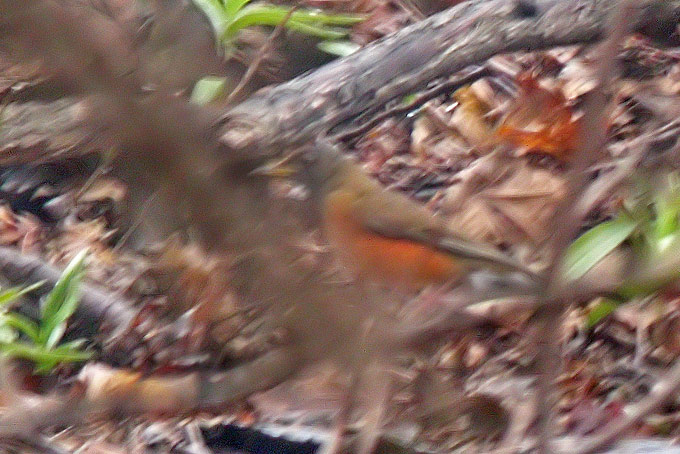
Eocheong Island, April 19
Cold, overcast and dull birdwise for much of the day with some light rain: however warm southwesterlies blew in by late afternoon. These brought the first Pacific Golden Plover, and also 18 Barn Swallow and 2 Pacific Swift in off the sea.
Best of 51 species still 8 Greater Short-toed Lark and a Chinese Blackbird: also noteworthy perhaps a Grey-faced Buzzard, 3 Brown-headed Thrush and a late Pallas's Reed Bunting. There has also been a general clear out, with species that were abundant a week ago now in lesser numbers, e.g. only 39 Brambling, 34 Dusky Thrush, 18 Siberian Stonechat, 2 Olive-backed Pipit and 1 Taimyr Gull.
26 Asian Stubtail were busy foraging en route to the lighthouse, with one obviously newly arrived and very tired.
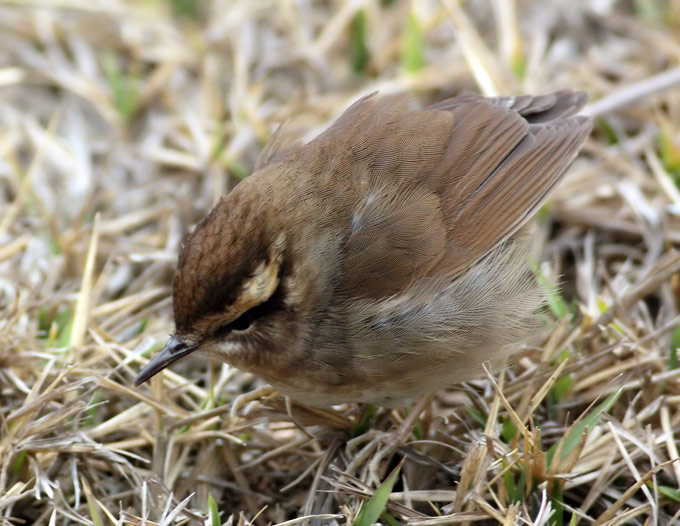
Ganseong x stream and beach, April 19
I arrived home Sunday afternoon, April 18, after a weekend away and needed to get out and look at some birds. I walked along Nam Cheon, the small creek that flows into the East Sea (Sea of Japan) south of the apartments I live in. It turned out to be a worth while outing even though it was brief.
There were numerous Buff-bellied Pipits along the creek and on the adjoining rice fields. White Wagtails, Little Ringed Plovers and Common Sandpipers were active along the sand and gravel banks. I found Siberian Stonechats and Black-faced Buntings in and near the remnant riparian vegetation. Unfortunately, most of the trees and dry annual plants were removed from the river banks after last summer.
On and in the water I saw Spot-billed Ducks, Mallards, Tufted Ducks and Gadwalls. On a flooded rice field to the south there were Common Teal and Common Snipe. When I was almost down at the coast I found 3 Red-flanked Bluetails in the dry vegetation on the northern bank of the creek.
Resting on the beach were Black-tailed Gulls, Vega Gulls and Slaty-backed Gulls. On top of the dune was a Kentish Plover. Off the coast were Red-bresated Mergansers, Great Crested Grebes, Black-throated Loons and Ancient Murrelets.
It turned out to be quite a good walk with over 30 species observed.
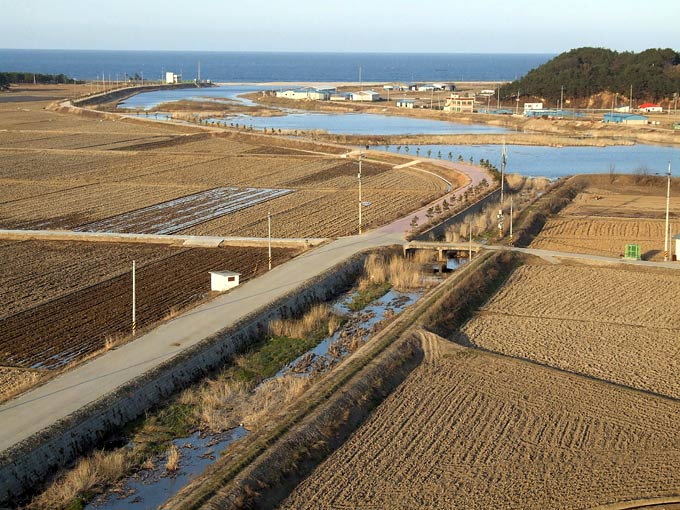

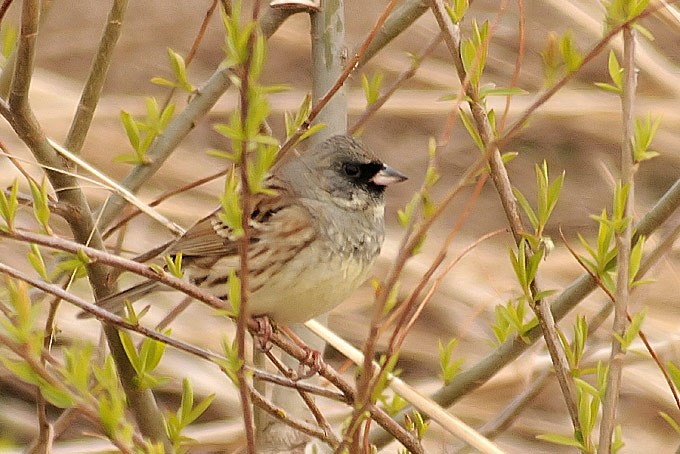


Gageodo, April 17-18
The bird mix on Gageo was very similar to Heuksan’s: Buff-bellied and Olive-backed Pipits with a few Red-throated Pipits; Black-faced, Rustic, and Yellow-throated Buntings with the addition of a few Little and Yellow-browed Buntings; a Japanese Yellow Bunting and a Siberian Blue Robin. Also: numerous Red-flanked Bluetails and Siberian Stonechats, Japanese and Korean Bush Warblers, 6 Greater Short-toed Larks, small flocks of Bramblings, a few Pale and Dusky Thrushes and one each of Chinese Blackbird and Brown-headed Thrush. On the beach: a Black-winged Stilt, 2 Great Knots, 2 Dunlins, a Kentish and a Little Ringed Plover. Just off-beach: an Pacific Loon. On and off the rocks: 2 Grey and several White Wagtails. One Blue and White Flycatcher represented the family, but no ficedula in evidence. A tree near the stream held on Grey and one Red-billed Starling. Later over the village, these two had joined 9 other Grey Starlings.
The 18th was overcast with spits of rain all day. New birds included a Chinese Bulbul and several flycatchers: one Yellow-rumped, 2 Narcissus, and 2 Asian Brown. A single Grey-faced Buzzard appeared twice. Both the Greater Short-toed Lark and Red-throated Pipit flocks seemed to have swelled, with 8 and 7 respectively, and a Blyth’s Pipit showed (and called) as well. A probably different Japanese Yellow Bunting made a welcome appearance. Highlight at the stream area was a Temminck’s Stint; also in the “ditch” a Common Teal and 2 Intermediate Egrets. The rocks near the trash tip held a Yellow Wagtail. More Brown-headed Thrushes seem to be in, with a total of 5, and a second (probably new) Chinese Blackbird showed, along with a Chestnut-eared Starling, near the minbak. I heard my season’s first Yellow-browed Warblers and saw a Goldcrest, three Eastern Crowned Warblers and one Dusky Warbler. In the late afternoon an Oriental Scops Owl started calling from the hills above the village. And, for the very end of the day, a disquieting note: overall numbers of Barn Swallows seem very low, with barely a dozen around the village. Hopefully some of this is weather-related.




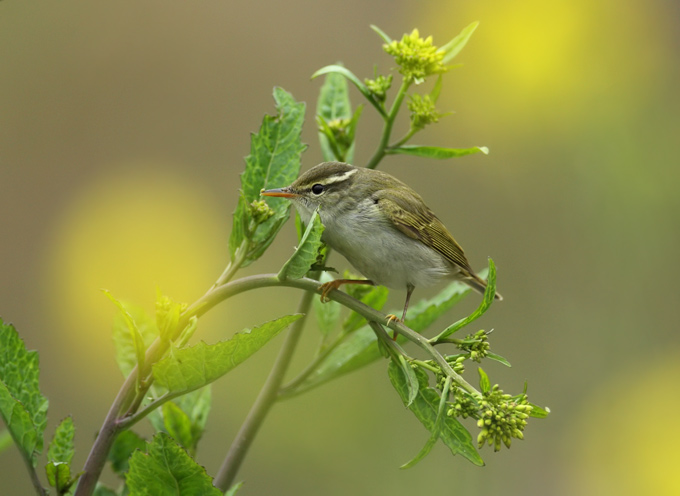
Yeongjeong Island, April 18
It would have been a wonderful cool spring day had the sun decided to come out and stay a while… overcast with a slight easterly wind dominated most of the morning and afternoon. At Eulangri, Black-tailed gulls managed to cover the length of the beach once the tide started going out. There were a few Heuglins and Herring Gull mixed in as well. On the mudflats, going to Young kyu church – 10 Kentish Plover, 2 Eurasian Oystercatcher, 30 Dunlin, 2 Common Sandpiper, 6 Black-tailed Godwit, and 12 Far Eastern Curlew. In adjacent rice fields, I spotted 4 Little Ringed Plover, 2 Mandarin Duck, 2 Common Kingfisher, 1 Siberian Stonechat, and 2 White Wagtail. In several parts of mixed woods: 1 Greater Spotted Woodpecker, 15 Red-flanked Bluetail, 2 Dusky Thrush, 6 Brown-headed Thrush, 4 Pale Thrush, 2 Goldcrest, 6 Grey-capped Greenfinch, 1 Asian Stubtail, and 2 Pallas's Leaf Warbler.

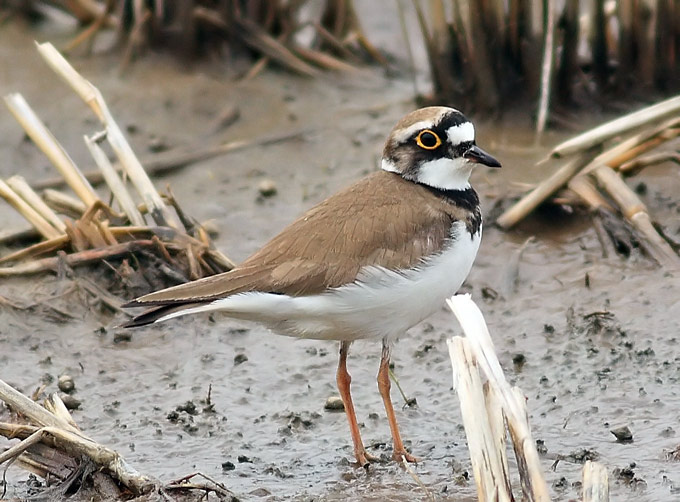
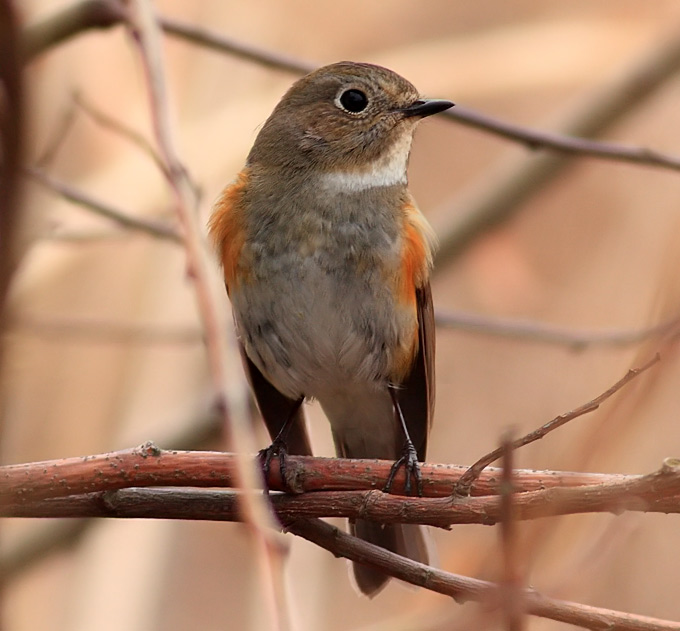
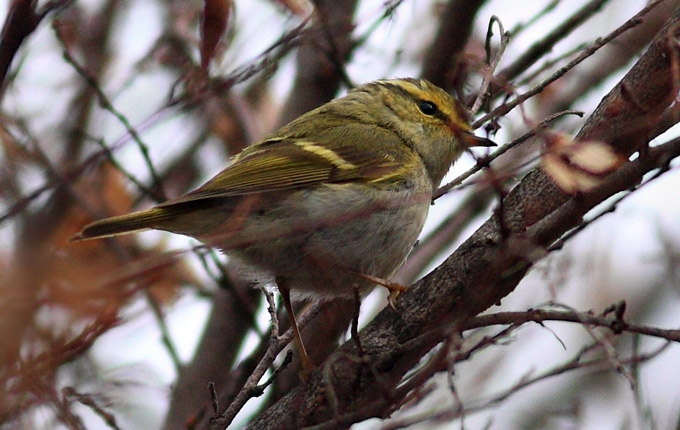
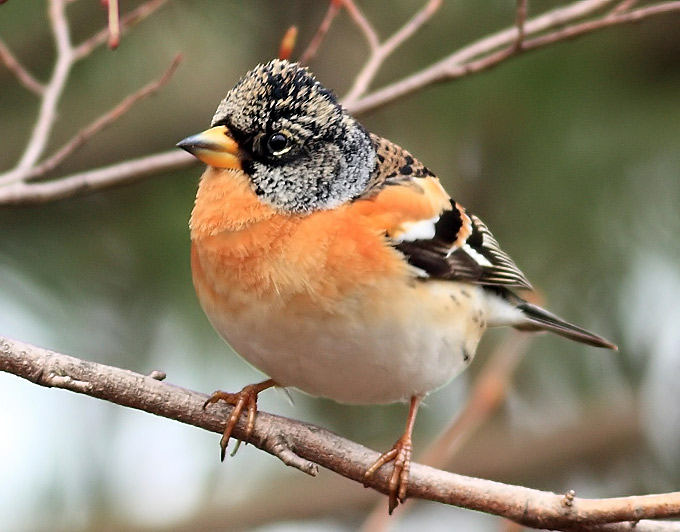
Eocheong Island, April 18
Dark and overcast with a strengthening southeasterly wind and rain by early afternoon. With bad weather approaching, it appears much of yesterdays influx had already departed by morning. 53 species included 8 Greater Short-toed Lark, 2 Chinese Blackbird and a Latham's Snipe.
Most abundant passerines were Red-flanked Bluetail (61), Dusky Thrush (44, including one flock headed northeast at dawn), Black-faced Bunting (40) and Asian Stubtail (37).
Black-tailed Gulls have recently been engaged in a lot of courtship-related disputes and displays- whereby pairs march forward side-by-side with heads bowed down.
Sadly 2 oiled Arctic Loon are lying on the pebble beach, one already dead and the other in a very weakened state. Harbours provide refuge from rough weather.. but also tend to be fouled with boat engine oil.


Socheong Island, April 17
Day three of the third three-day count cycle (with day one covering the western half of the island; day two covering the whole island; and day three covering the eastern half), again starting with viz-migging at North Point. Although the island continues to be increasingly disturbed (now with a record-breaking seven construction sites and two further “construction yards”: the reality here behind “Green Growth”), a milder southwest wind produced a rush of birds, with 83 species logged. These included the first Intermediate Egret (1), Eurasian Hobby (1), Common Greenshank (1), Wood Sandpiper (1), Common Sandpiper (2), Common Kingfisher (4), Eurasian Wryneck (2), Yellow-browed Warbler (1), Siberian Blue Robin (1), Eastern Yellow Wagtail (1), and Chestnut-eared (1), Tristram’s (2), Yellow-browed (4) and Ochre-rumped Buntings (2) of the spring. Most numerous visible departing migrant was Dusky Thrush (with 191 watched departing north or north-east between 0630 and 1020) and most numerous grounded migrant was Red-flanked Bluetail, with three times more in the east of the island today than yesterday (increasing from 66 to 189), with Asian Stubtail also increasing from just one to 52. Further highlights included two Eurasian Wigeon moving east (with eight White-winged Scoter), and “female one” now feeding together with the male Black Redstart.
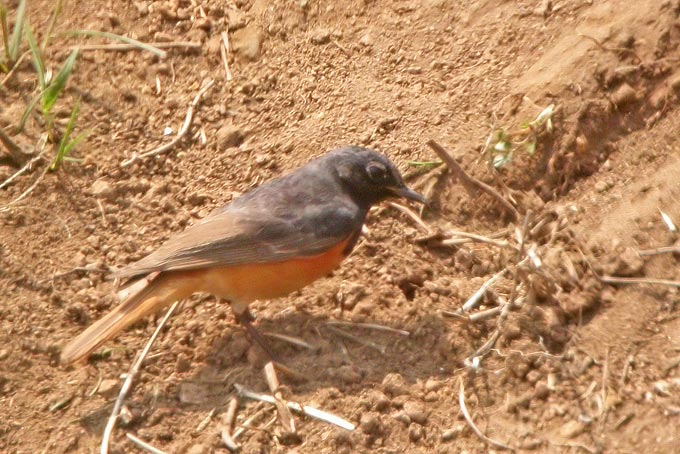
Southwest Jeju island, April 17
Flooded farmer's fields near Sanbangsan provided good habitat for 5 Black-winged Stilts, 2 Temminck's Stint, 3 Common Snipe, a handful of Marsh, Common, and Wood Sandpipers, 4 Little Ringed Plovers, and 2 pairs of Garganey. A nearby Oreum held a Black-faced Bunting and several Yellow-throated Bunting, a male Blue-and-white Flycatcher, an Asian Stubtail, a male Narcissus Flycatcher, several Brown-headed and Pale Thrush, an Arctic Warbler, and a female Red-flanked Bluetail. In a farmer's field, dozens of noisy Far Eastern Skylark, 3 Japanese Quail, a half dozen Siberian Stonechat, and 3 Oriental Pratincole.


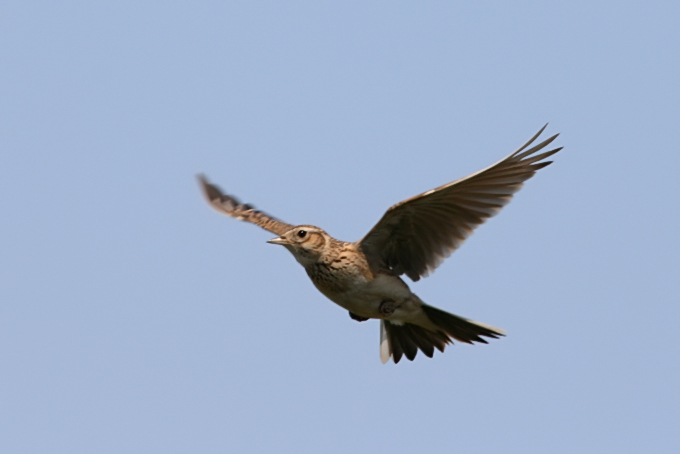
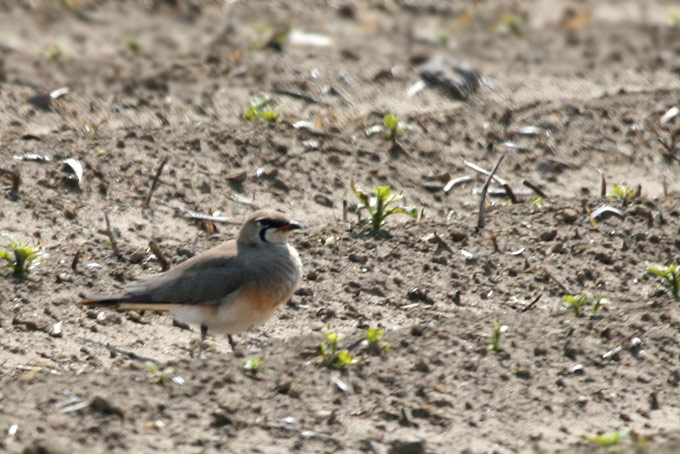
Junam/Dongpan Reservoirs, April 17
A very quiet visit on a beautiful warm spring day. The main area of interest was the flooded fields and ponds south of Dongpan, which held 10 Wood Sandpipers, a single Green Sandpiper, and 5 Little Ringed Plovers. Elsewhere, there were 2 Little Terns at Junam, half a dozen lingering Dusky Thrushes, and a scattering of recently arrived Siberian Stonechats which will presumably stay to nest in the area.
Heuksando, April 16-17
The ferry journey (limited outside access) was uneventful. The afternoon and evening of the 16th yielded the following highlights: single digits of Buff-bellied and Olive-backed Pipits, a few Pale Thrushes and one Brown-headed Thrush, small numbers of Black-faced, Rustic, and Yellow-throated Buntings, small numbers of Red-flanked Bluetails, several Siberian Stonechats, 2 Greater Short-toed Larks, a Blue and White Flycatcher, a Common Kingfisher, various calling Korean Bush Warblers, small numbers of Oriental Greenfinches and Bramblings, a Black-winged Stilt, a Arctic Loon, 3 Common Greenshanks, 2 Golden Plovers, a Grey Plover, a Mongolian Plover and a Common Sandpiper.
The morning before the ferry added a Grey-faced Buzzard, a snipe sp. and a Black-crowned Night Heron.
Both of Heuksan’s wetland areas are suffering new degradation: the smaller reedy pond (formerly a prime spot for Baillon’s Crake) is now stuffed with new trash and construction fill as a new building goes up; even the larger pond next to the bird research center has an active bulldozer working its edge – apparently to dredge fill-dirt for the first area. The obvious question by now sounds like the lines to a chorus that too few hear: when will it stop?
The ferry to Gageo was relatively quiet until near Gageo, when a few small groups of (presumably; views were distant) Ancient Murrelets showed, as well as an outstanding highlight: Long-tailed Skua! Initial id. was relatively straightforward on structure alone: a very lightly built skua (“ternlike”) with small head, distinctly short bill and elongated rear (although tail streamer was not visible); these were supplemented by plumage details including a clear distinction between black flight feathers and grey mantle/coverts, a lack of any breast band, some hints of yellow tone around head and neck, dark cap, and very thin but just-visible white primary flashes.





Eocheong Island, April 17
Dead calm and very dull birdwise through most of the day until finally a large fall of migrants by evening. 48 species for the day. Firsts comprised Siberian Blue Robin (2), Little Bunting (6) and Tristram's Bunting (3). Otherwise notable were 10 Greater Short-toed Lark and a new (adult male) Chinese Blackbird.
Some movement was apparent in the early morning with two flocks of Grey Heron (22) overhead and heading east, followed by a flock of Dusky Thrush (61), leaving the island and headed north east. In one hour of fading light from 5-6pm however, suddenly e.g. 81 Asian Stubtail, 9 Common Kingfisher, 133 Black-faced Bunting, 71 Siberian Stonechat, 73 Red-flanked Bluetail, 20 Pale Thrush, 24 Korean Bush Warbler and 35 Grey-backed Thrush. All this counted and seen only from my regular circuit, but a rough guess would be of hundreds to thousands of birds distrbuted over the island as a whole.


Socheong Island, April 16
Survey of the whole island found only 59 species, with Red-flanked Bluetail (119) and Black-faced Bunting (85) the two commonest grounded migrant, and species like Pallas’s Leaf Warbler (14) and Grey-backed Thrush (49) showing an obvious increase on the day before. Species of most note included Socheong’s first Oriental Scops Owl (1) of the spring, a new high count of 13 Greater Short-toed Lark and yet another Black Redstart (if all other East Asian female redstarts can be excluded…). This individual showed a much paler-looking belly than the reddish-bellied female of the 15th (“female one”) and a rather strong eye-ring – but still the grey-washed look and brown flight feathers typical of Black Redstart.

Eocheong Island, April 16
Little change in the cold and windy weather, and only slight turnover in the birdlife: 49 species seen today. Seasonal firsts consisted of 1 Dusky Warbler, 2 Siberian Rubythroat, and 2 Pallas's Leaf Warbler.
The handsome Chinese Blackbird is still ruling the thrush scene, but apparently hates his photo being taken. 38 Dusky Thrush ,16 Pale Thrush, 4 Naummann's Thrush, 3 Grey-backed Thrush, and 2 Brown-headed Thrush made up the rest of the turdidae.
In other news, numbers of Greater Short-toed Lark have jumped to 6: 4 Hoopoe are hanging out on the headland, while the lone Red-necked Grebe (apparently the first record for Eochong) and 4 Great Crested Grebe still grace the harbor.





Eocheong Island, April 15
Sunny with a continuing northeasterly breeze, 53 species recorded. Firsts included a calling Oriental Scops Owl, a Eurasian Sparrowhawk and a very sleek breeding-plumaged Slaty-backed Gull ( uncommon in the Yellow Sea).
Of interest, 4 Greater Short-toed Lark, a late Long-tailed Rosefinch, and the Chinese Blackbird (proving to be remarkably wary and elusive).
Despite cold and wintery weather, there is a small trickle-in of birds: there are now 3 Intermediate Egret, and 4 Grey Heron, including a youngster: the alba Western Great Egret is also still hanging around.
More drama in the bird world today: the newly-arrived Sparowhawk has apparently already devoured one of the White's Thrushes. Just like a Treecreeper, a Red-flanked Bluetail was seen climbing a tree trunk, looking for insects between the bark. A Dusky Thrush appeared to be listening for worms with his head held down to the ground: strangely it kept its mouth permanently wide open (pictured).
A late Arctic Loon still persists in the port.





Seogwipo, Jeju island, April 15
Still unseasonably cold on Jeju. A 'thrushy' day in a Seogwipo park, with a White's Thrush, a dozen Dusky Thrush, a similar number of Pale Thrush, and now at least 6 Brown-headed Thrushes seen furtively foraging next to a stream. Several dozen Barn Swallows swooped over a river and rested on rocks. The Barn Swallows scattered when a Peregrine Falcon swept through the small valley at a very high rate of speed, ominously leaving a contrail of small blue and white feathers behind.

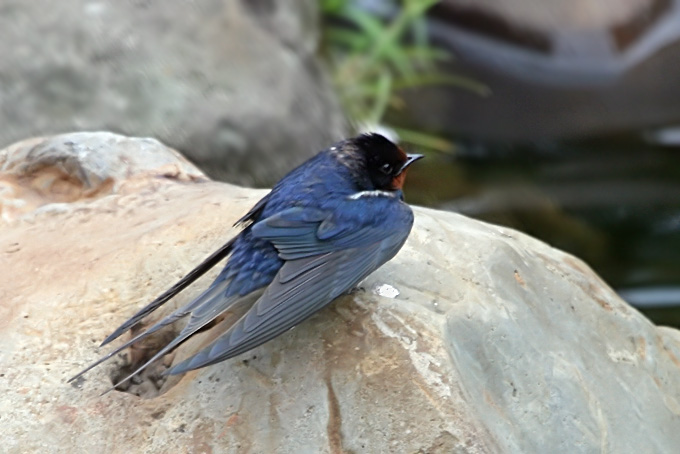
Socheong Island, April 15
With only light westerly winds, the first bird heard and seen during the morning visible migration watch (“Viz-mig”) was Korea’s first Godlewski’s Bunting! More details will be posted later, as internet access (and survey work) allow! Other species of note in the early morning included six Grey-faced Buzzard east at 0550 and the personal first Blyth’s Pipit of the spring.


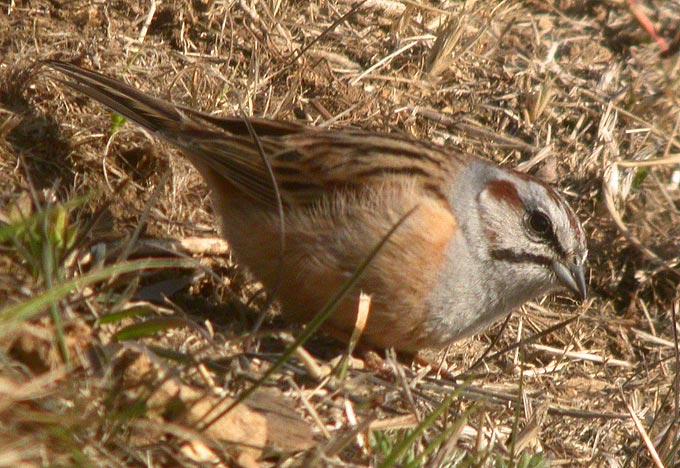

Socheong Island, April 14
In strong winds, starting to become more moderate through the afternoon, only a few hours in the field, with obvious highlight a male Black Redstart, in the exact same area as one on April 4 (but not certainly during four subsequent surveys covering the same location). Images suggest some subtle differences, though “both” show patchy looking upperparts and a pale crescent to the rear of the eye.
Eocheong Island, April 14
Overcast and abnormally cold. Unfavorable winds finally abated by early afternoon, after which there was a light dusting of sleet. Bird-wise, rather poor with only 47 species recorded. There has been a general clearout of birds, although I noted the first Red-throated Pipit and baicalensis White Wagtail today.
Otherwise notable were the Chinese Blackbird and a Greater Short-toed Lark. I counted 5 Pale Thrush, and the single Dunlin is still in the harbor: likewise a Spot-billed Duck which looks a little out of place trying to dabble in the surf.
Highlight perhaps was brief views of the mystery Eochong mustelid – a ginger creature which to me best matches Siberian Weasel (Mustela sibirica), although it seemed a touch larger than the ones I have seen on the mainland.
More bizarre behaviour: at the dam, a Siberian Stonechat was hovering on-the-spot low over the water (exactly like a Kingfisher), occasionally dropping down to pluck an insect from the surface. Later one was seen to employ the same technique flying back and forth over the sea, persisting for perhaps 5 minutes, despite repeatedly being swamped by waves-yet managing to get airborne again. After some time, it finally got waterlogged and floundered about, at which point an opportunistic Black-tailed Gull swooped and plucked it out of the water.

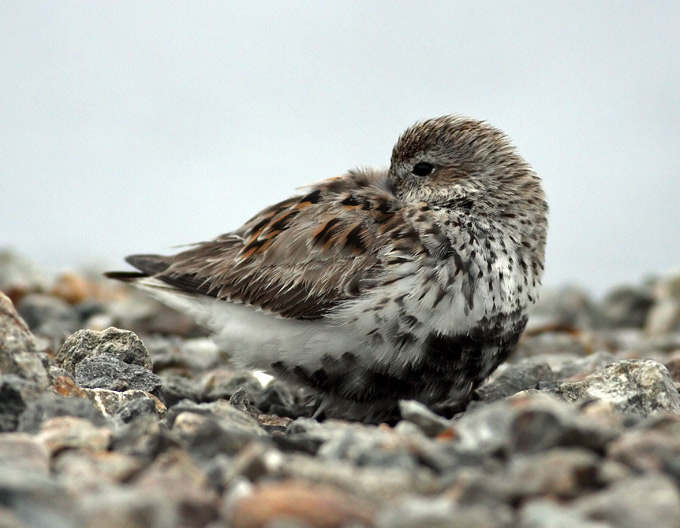

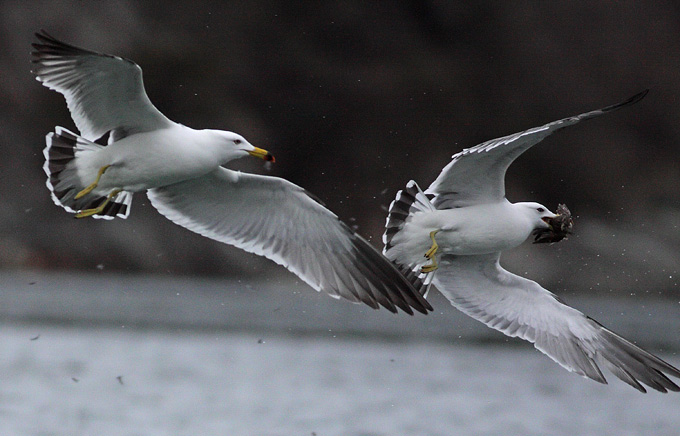
Mokpo Namhang Urban Wetland, April 14
The daily count showed 39 species with over 2200 birds today. Most numerous were gulls with c. 780 Black-headed Gulls, also Black-tailed (147), Common (160) and Vega Gulls (149) were present. The big majority staying together with c. 400 ducks; Common Shelduck (85), Common Teal (215), Spot-billed Duck (20), Eurasian Wigeon (31), Northern Shoveler, Falcated Duck, Gadwall and Mallard (in small numbers); in the wall enclosed lagoon which now gets in-filled by a second excavator. The natural tidal flat hosted a bit more than 200 ducks Common Teal, Eurasian Wigeon and 1 new arrived Garganey and about 300 shorebirds: 6 Grey Plover, 5 Mongolian Plover, 96 Kentish Plover, 5 Little-Ringed Plover, 1 Far Eastern Oystercatcher, 5 Whimbrel, 158 Bar-tailed Godwit (3 individuals with an orange leg flag (AUS), 2 with a green (AUS) and 1 with a white (NZ)), 3 Common Greenshank, 2 Common Sandpiper, 8 Dunlin, 3 Red-necked Stint, 15 Great Knot, 3 Terek Sandpiper, 2 Ruddy Turnstone and as highlight 3 Black-winged Stilt. In the reed bed area a few more Northren Shoveler, 4 Little Egrets and 7 Black-crowned Night Heron were seen.

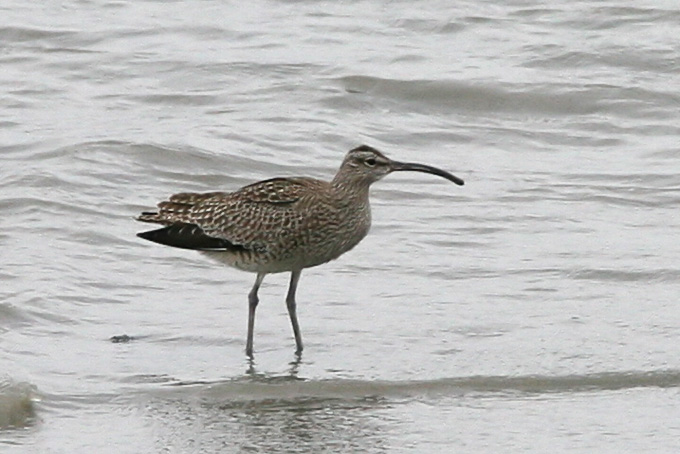
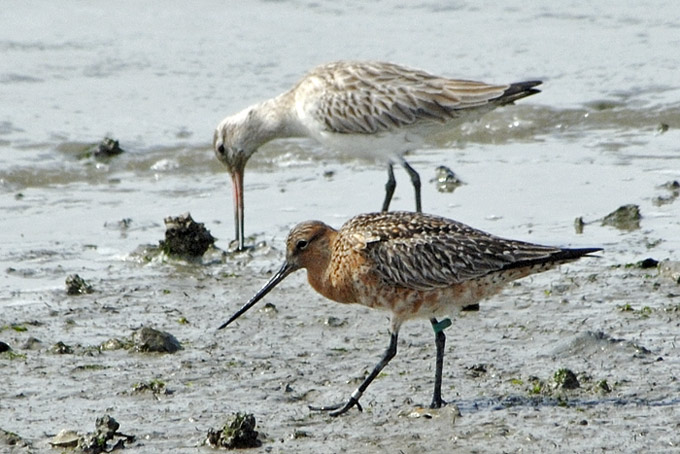
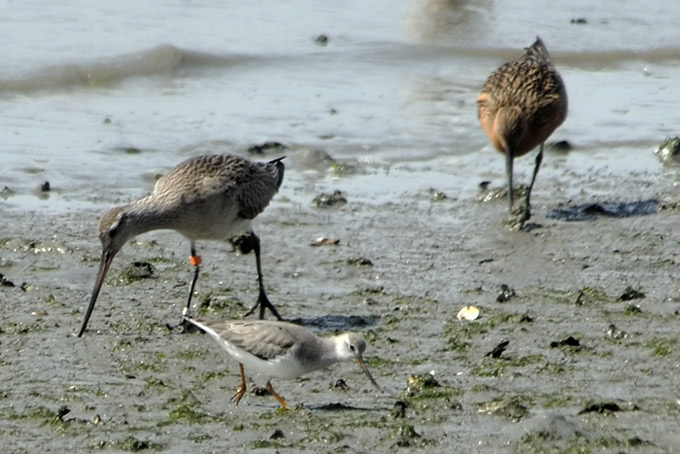



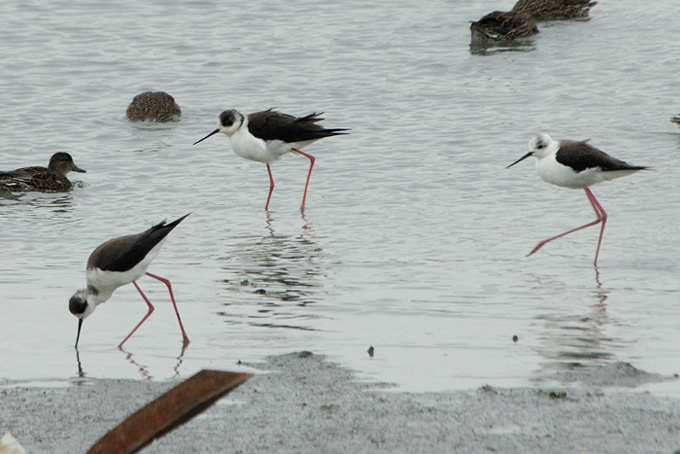
Eocheong Island, April 13
Heavy rain overnight was however countered by strong northwesterly winds by day, which made surveying very difficult- with most birds hunkered down in cover. Thus, only 50 species total, These included several newcomers, most spectacularly an Oriental Plover briefly in the morning. Other firsts consisted of 4 Brown-headed Thrush, 1 Wood Sandpiper, 1 Dunlin,1 Intermediate Egret, a Common Snipe on the harbour mud (which when stretching showed the characteristic contrasting white-and grey armpit). A Latham's Snipe in the dry grassland showed a heavily vermiculated underwing pattern, legs trailing beyond the tail, and a high, direct flight when flushed.
Many of the 51 Red-flanked Bluetail appeared utterly exhausted, virtually unable to fly- indicating an overnight arrival. Also of interest were 4 Greater Short-toed Lark, the Chinese Blackbird, 19 Olive-backed Pipit, and 5 Hoopoe.
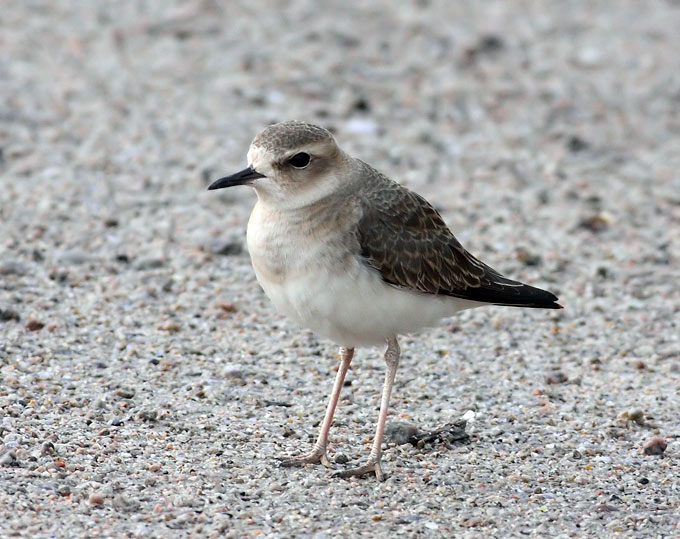
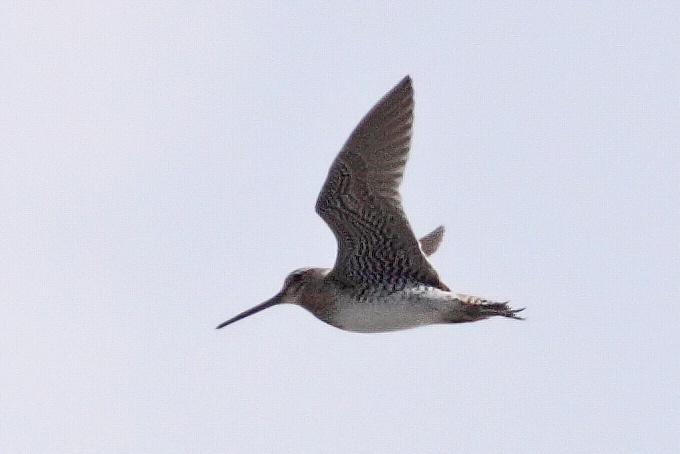
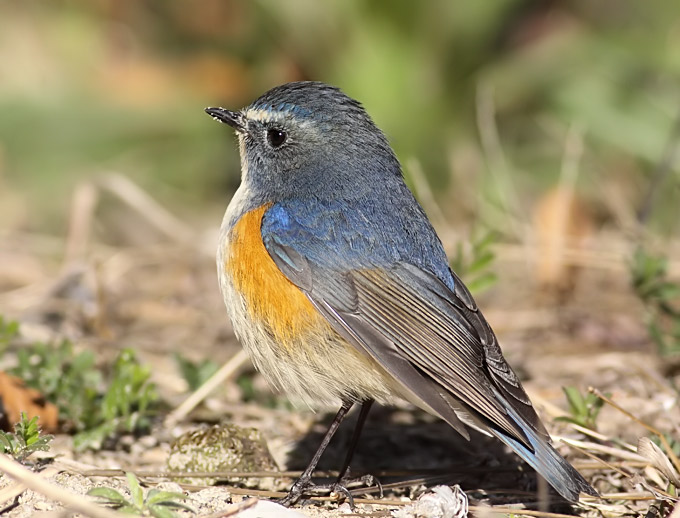


Socheong Island, April 13
In exceptionally unseasonably cold weather (with a morning low of only 1C and a high of probably only 6C) and winds gusting to gale-force, the day was rather species poor – especially when compared to the wonderful number of birds here on the same date in 2009. Survey effort limited to the central part of the island found only 44 species, with highlights a Great Knot on the beach crouching behind a rock (joining the two now forlorn-looking Kentish Plover), the Water Pipit still (though increasingly elusive), five Greater Short-toed Lark, and a baicalensis White Wagtail.
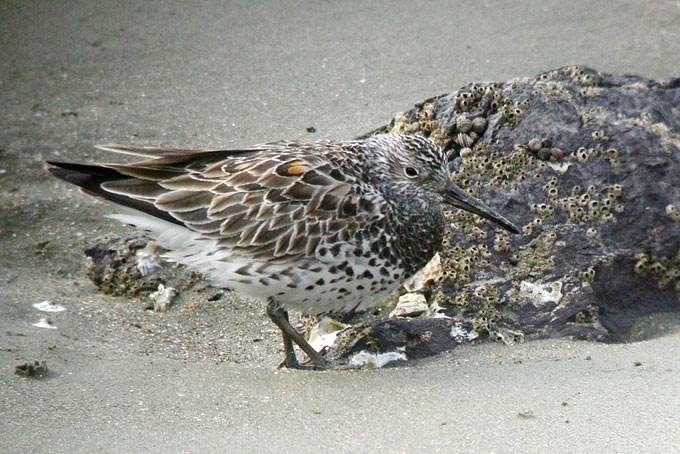
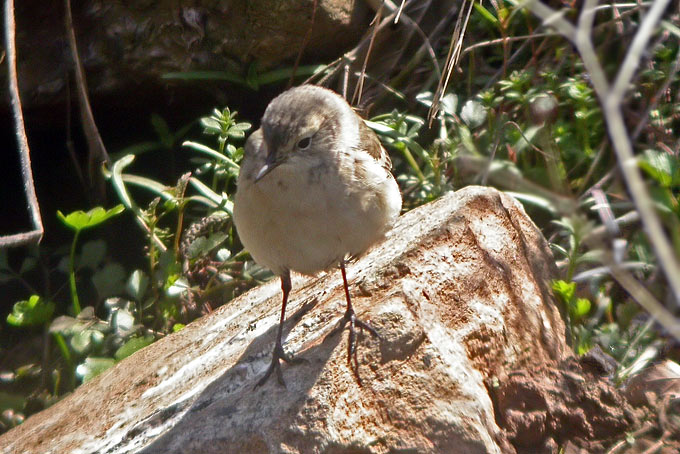
Seogwipo, Jeju island, April 13
Very strong northwesterly winds and sunny fresh weather in Seogwipo. One male Ashy Minivet was seen in a Seogwipo park, in almost the exact same spot where 3 were seen last year (April 18, 2009). It was very approachable, as it fed on caterpillars and flowers next to a stream. It made a distinct rapid trilling 'sheee-reeep' call. Numbers of Pale Thrush in the park seem to have swelled to about a dozen, with at least 3 Brown-headed Thrush also seen. A gang of about a dozen skiddish Dusky Thrush remains in the park. Several Olive-backed Pipit and White-cheeked Starling were also spotted. West of town, a male Blue-and-white Flycatcher (this one a cyanomelana) fed next to a dry riverbed. Barn Swallows have become noticeably more plentiful, with clouds of 20-30 seen above most fields and areas with water.


Incheon Ferry and Socheong Island, April 12
Under grey skies, with rain starting just south of Socheong, species of note from the ferry included a dozen or so Ancient Murrelet and several Finless Porpoise – the first seen on this transect for several months. In the remaining hour and a half of light, on the island itself Brambling (40), Red-flanked Bluetail (30), and Black-faced Bunting (10) appeared to be the commonest grounded migrants around the village, with species of most note two Kentish Plover on the beach (now being bulldozed…) and a Water Pipit (probably still less than 30 national records?) well seen in the stream, loosely associating with single Red-throated and Buff-bellied Pipits.
Eocheong Island, April 12
Dark and overcast, with a day total of 60 species. Threatening clouds have not yet turned into rain, so there has been no cloudburst of migrants but rather a trickle of arrivals and departures.
Spring firsts comprised 7 Asian Stubtail scratching about in the scrub, a Pallas's Reed Bunting, 1 Siskin, 2 Spot-billed Duck, 1 Yellow-browed Bunting, and 1 Eastern Buzzard cruising high overhead in a northwesterly direction. I also found recently-shed feathers of a Brown Hawk Owl on the path- (which were not there yesterday).
The Long-tailed Shrike put in a brief appearance at the dam, and the gardens are now hosting 6 Common Rosefinch, as well as the Chinese Blackbird still.
Eochong's current top five, in order of numbers, are Brambling (152), followed by Dusky Thrush (48), White-cheeked Starling (45), Red-flanked Bluetail (31) and Olive-backed Pipit (29).
Two sights worthy of mention: the resident pair of Peregrine were seen to co-operatively pursue and then catch a Barn Swallow flying in off the sea. I also noticed a Red-flanked Bluetail behaving very strangely- thrashing about on a tussock of grass with fully splayed wings and tail and eyes closed. It took a while for it to notice me standing right beside it whereupon it flew up and away. Was it anting I wonder?.
In other news, the Far Eastern Curlew has been joined by a second, and there are 5 Grey Wagtail around the place.
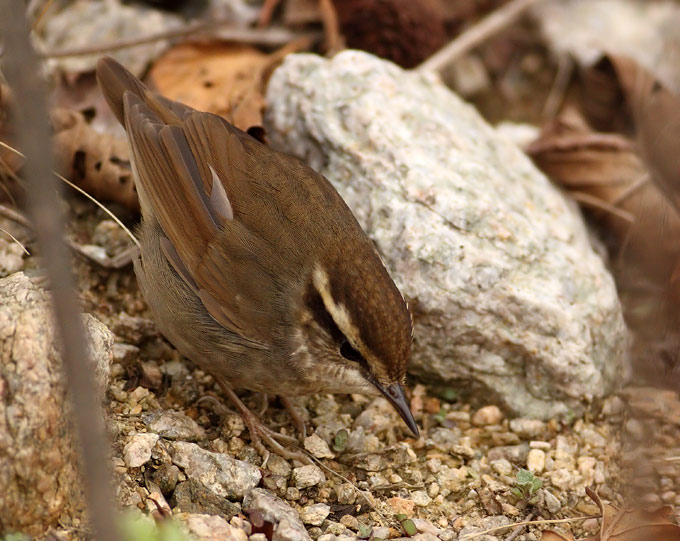

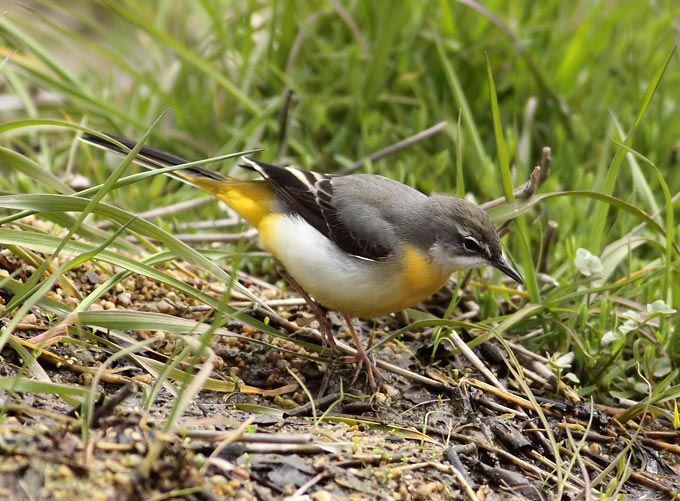
Busan, April 11 & 12
With a rain system from south-central China forecast to hit the southeastern corner of Korea, I made plans to meet Dominic Le Croissette and Heather Henrichs at Busan’s picturesque Taejongdae on the afternoon of the 11th. Taejongdae is a traditional spot for Japanese Robins, and the visit did not disappoint: arriving in the (overcast, windy, with spits of rain) mid-afternoon, I encountered a single male which seemed to behave in characteristically robinesque fashion: alternately shy and inquisitive. Other birds included a few Pale and Grey-backed Thrushes, a (female) Blue and White Flycatcher, a Grey Wagtail and a few small flocks of Japanese Whiteyes. The arrival of H.H. and D.L.C. in the evening brought a noticeable pickup in bird activity: between us, we recorded three more Japanese Robins (all females now), a brilliant male Narcissus Flycatcher along with the Blue and White, and, apparently just in, three Grey Thrushes along with a seeming increase in Pale Thrushes.
Rain came in during the night and continued lightly through the morning. For the morning only, we had highlights of an apparent total of 4 female Japanese Robins (making a likely total of 5 for the trip), brief glimpses of the female and now a male Blue and White Flycatcher, a small flock of Goldcrests, and a White’s Thrush (H.H. and D.L.C).
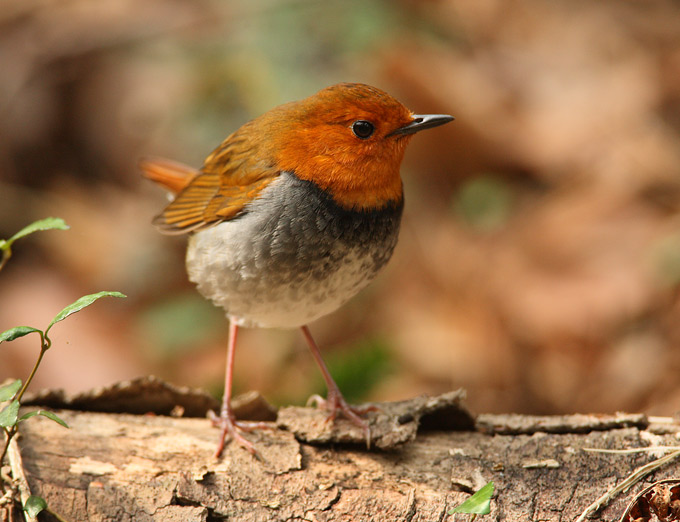
Weyeon Island, April 11
A First for Korea. Mr Im Kwang-Wan very kindly forwarded the following exciting news and photo: on April 11 on Weyeon-do, a team of KWBS members found and photographed a Golden-crowned Sparrow. This is the first record of this North American species (considered accidental in Japan and Eastern Russia) in Korea.

Northeast coast of Gangwon Province, April 10 & 11
I had a good weekend of birdwatching. Saturday, April10, I walked along Namdae Cheon from the coast to Yangyang. There were several people fishing so I didn't see a lot of birds on the water near the coast. There were some good birds around though. I saw about 12 Little Terns flying over the sea near the sandbar. On the sandbar I saw 3 Eastern Curlews, Little Ringed Plovers, Great Cormorants and Grey Herons. A Black-tailed Gull picked up an eel in the lagoon and flew over the sandbar. The eel must have been too big for the gull to handle and it dropped it. A Grey Heron saw it happen and took advantage of the easy meal. Other birds in the lagoon were Spot-billed Ducks, Common Teals, Common Mergansers, CommonGoldeneyes and Great Crested Grebes. On the south side of the floodbank in the trees there were Rustic Buntings, Grey-capped Greenfinches and Bramblings.
Upstream from Naksandae Bridge, Coots, Gadwalls, Mallards and 2 Hoopoes were seen. More ducks were further upstream including more Spot-billed Ducks, Mallards, Common Mergansers, Common Teals and Mandarin Ducks. There were numerous Siberian Stonechats, Pallas's Reed Buntings and Daurian Redstarts in the shrubs along the north side of the river channel. There was a Great Crested Grebe and a Red-throated Loon in the same area. Several Common Snipe flushed when I got too close to them.
Closer to Yangyang near the road I flushed a large snipe like bird that was generally rufous in colour. It didn't call as it flew, but I heard its wings flapping, like a pigeon, as it took off. I believe it was a Eurasian Woodcock. There were a lot of Dusky Thrushes around too and I managed to photograph a couple of them. I also found a carcarse of a bird that was mostly eaten, apart from the back-bone, breast and wings. I may have been a Eurasian Bittern but I'm not sure about that.
In the afternoon I counted the birds on Cheongcho Lagoon. There were a lot of gulls there, especially Black-tailed Gulls, Slaty-backed Gulls and Vega Gulls. I saw what I think were Mongolian Gulls too. Great Cormorants, Great Crested Grebes, Little Grebes, Coots, Mallards, Spot-billed Ducks, Tufted Ducks and Eurasian Wigeons were on the water and the floating sections of pipeline. I found some good birds near the lagoon too, including 2 Red-flanked Bluetails and about 15 Dusky Thrushes.
Sunday, April 11, I did a survey of the birds around Ganseong. There were not a lot of birds along Nam Cheon, a few ducks, several Little Ringed Plovers, Long-billed Plovers, White Wagtails and a Common Greenshank. Offshore I could see good numbers of White-winged Scoters, Red-breasted Mergansers, Great Crested Grebes and flying Great Cormorants. I also saw at least 10 Loons that I think were Black-throated Loons, and a Slavonian Grebe. It was a bit difficult to see them as they dropped into the troughs between the ocean swells.
Heading north towards Buk Cheon I encountered some Brown-eared Bulbuls taking advantage of the tangerines that someone had thown out on a farmers field. In the same spot I found some White-cheeked Starlings and with them was a Common Starling. While trying to get photos of the Common starling I saw 2 Hoopoes as well.
In Buk Cheon and it's tributaries there were Common Teals, Mallards, Spot-billed Ducks, Northern Shovelers, Eurasian Wigeons, Common Mergansers, a Red-breasted Merganser and a male Garganey. I had a quick look at the breeding Grey Herons and saw that they had been joined by about 10 pairs of Eastern Great Egrets. I saw a Great Spotted Woodpecker working on a nest hole nearby.
Sunday afternoon I went to Geojin and Hwajinpo with Kim Seong-Mi. On the rocks north of Geojin there were Pelagic Cormorants and Great Cormorants, many of them in breeding plumage. The most dominant birds at Hwajinpo were Tufted Ducks (over 500), Greater Scaups, Mallards and Spot-billed Ducks. There were some Black-tailed Gulls, Common Goldeneyes, Great Crested Grebes and Common Shelducks there too.
Overall, it was a successful weekend of birding.
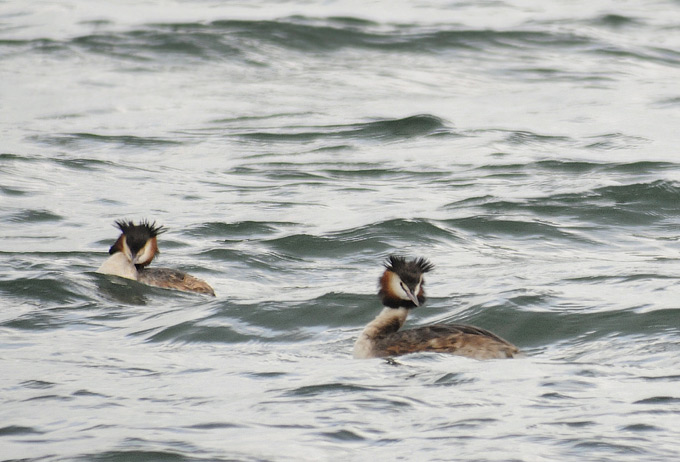

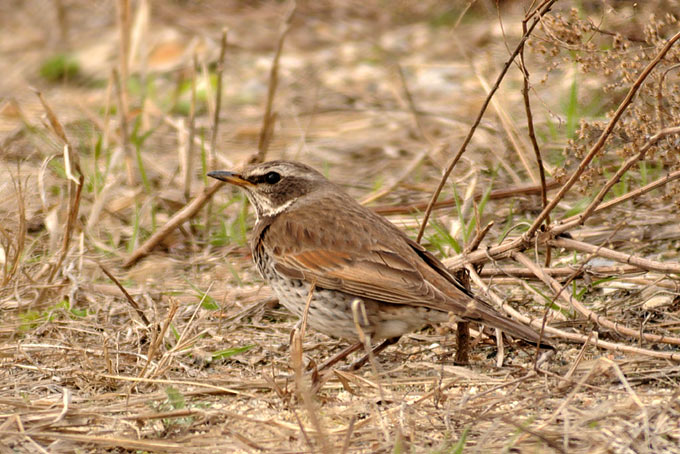


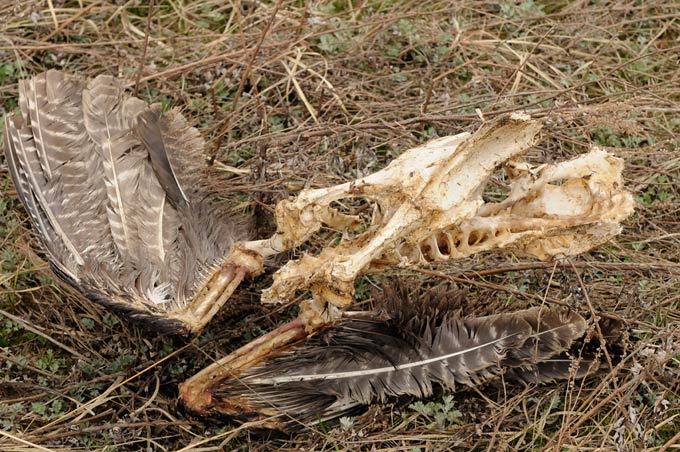

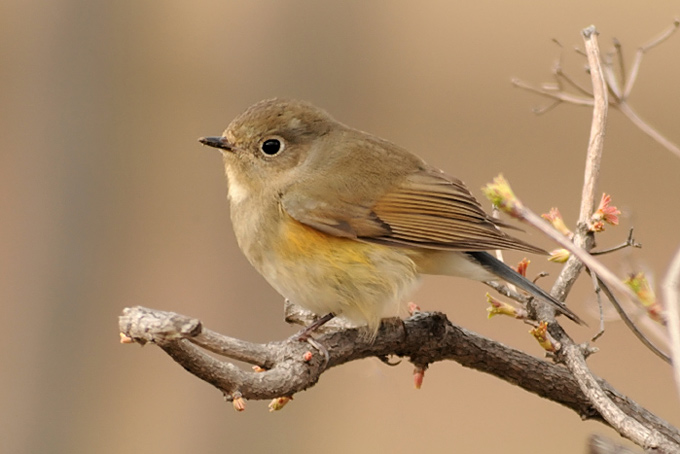

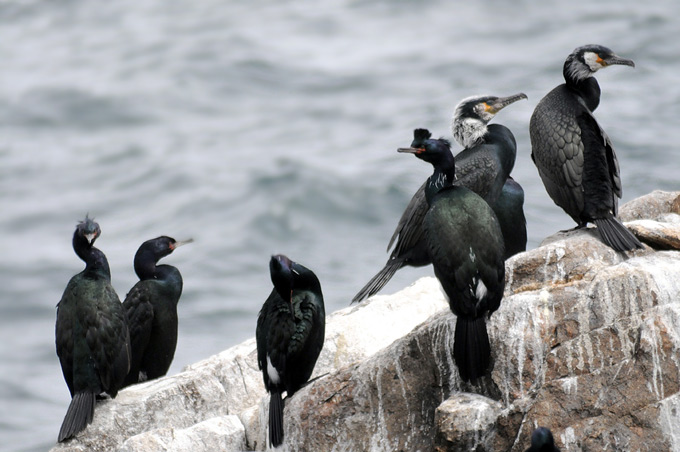

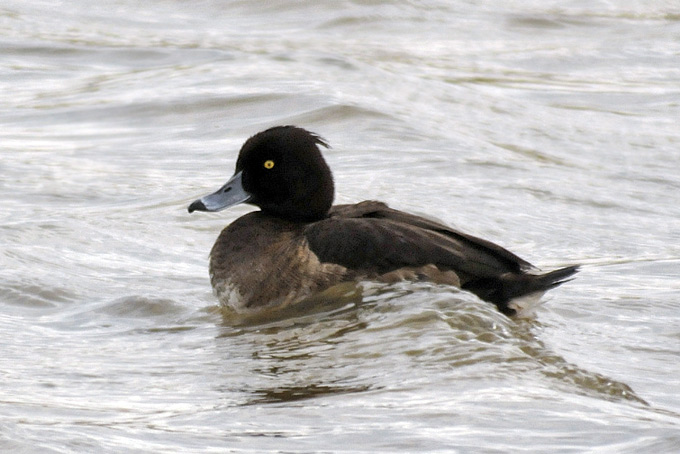
Eocheong Island, April 11

Hazy and overcast, with 54 species logged. The weather front of the previous day had dumped several seasonal firsts, most notably a Long-tailed Shrike, a Grey Thrush, 3 Far Eastern Lark, 2 Eastern Yellow Wagtail,1 Little Egret,1 Great Knot, 2 White-throated Needletail, and Olive-backed Pipit (37). Also noted were the first 2 ocularis White Wagtail.
Unfortunately construction and chainsaw disturbance has meant no birding possible in a section of the central valley, where an increasing swathe of hillside has been cleared.
Suddenly relatively plentiful are Black-faced Bunting (73) and White's Thrush (21).
Otherwise perhaps noteworthy were 1 Long-tailed Rosefinch, 2 Red-billed Starling, 7 Grey-backed Thrush, 3 Grey-faced Buzzard, 39 Red-flanked Bluetail (only 2 of which were males), and the Chinese Blackbird.

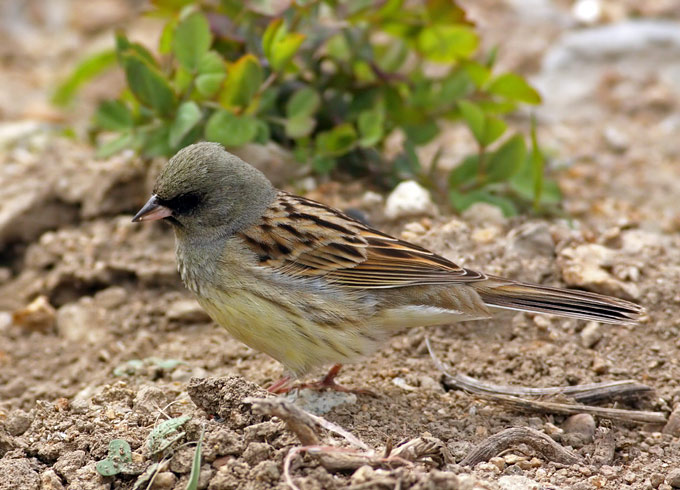

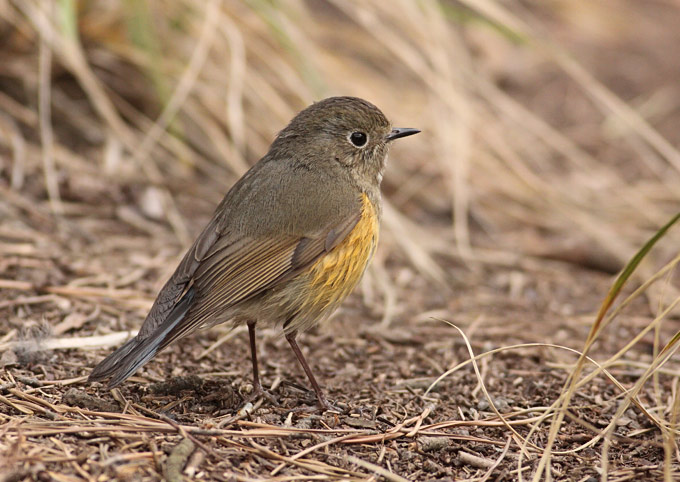
Seogwipo, Jeju island, April 11
Another mild and overcast day on Jeju. In a Seogwipo park, a seemingly exhausted Blue-and-White Flycatcher initially had me scratching my head, due to the black lores, but lack of black on the face and breast. It turns out this was a cumatilis Blue-and-White Flycatcher. This is the first time I've seen this subspecies, and is also a personal first flycatcher of the year. The river's resident and lone Striated Heron was seen with a second Striated Heron today, and they flew off together.
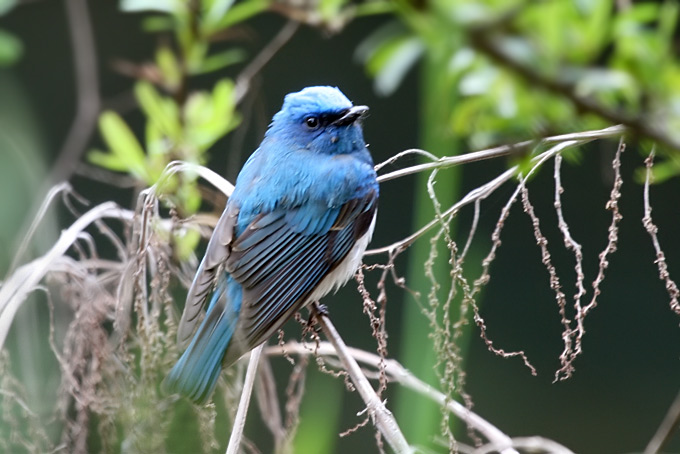
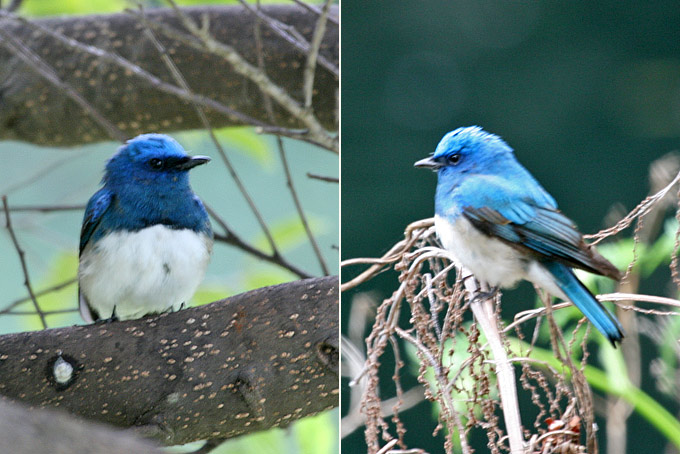
Taejongdae, April 10-12
Three visits to the area on three consecutive days (Saturday afternoon, Sunday afternoon and Monday morning). On 11th and 12th we were joined by Robin Newlin, who will supply the full reports for those dates. The weather conditions on 10th were initially quite promising, as the day started misty with a light southerly wind, and it remained mostly cloudy and warm with mist out to sea. However, there was very little sign of migrant bird activity. The highlight was the somewhat elusive male Eyebrowed Thrush in the same spot in the gully again (presumably the same bird as last week). An Eastern Crowned Warbler was also seen, loosely associating with a flock of Goldcrests that moved through the trees in the lower part of the main gully. 2 Pale Thrushes were also present in the main gully, with another 8 or so in leaf litter alongside the eastern loop of the road. A small arrival of birds appeared on 11th, ahead of a weather system from China that passed through later that night and into the morning of 12th. Again, it was definitely a case of quality rather than quantity, with a sprinkling of good birds including Japanese Robin, Narcissus Flycatcher, Blue and White Flycatcher, Grey Thrush, Grey-backed Thrush and White's Thrush (full report to come from Robin Newlin).
Eocheong Island, April 10
A change to rainy and misty conditions spurred some visible migration and pulled down a few tired migrants: 48 species logged. Spring firsts comprised a Daurian Starling, 3 Eastern Crowned Warbler, 1 Chinese Blackbird, an apparent alba Western Great Egret, a speeding Common Kingfisher, 3 Buff-bellied Pipit and a weary Far Eastern Curlew whose fretful cries echoed round the harbour.14 Rustic Bunting are also newcomers.
Early morning saw two squadrons of Dusky Thrush (231) pass northwards overhead, likewise flocks of Brambling (169) as well as a steady passover of lugens White Wagtails (31), with an extra 8 leucopsis loitering around the harbor.
Otherwise still plentiful in-situ were Siberian Stonechat (48), White-cheeked Starling (44) and Yellow-throated Bunting (32).
Also of interest, 7 White's Thrush- including close views of one paddling the ground with it's feet to scare up worms. 2 Grey-faced Buzzard were grounded by the weather. Otherwise notable were 4 Common Rosefinch, which included a rosy red male.


Southwest Jeju island, April 10
An overcast day and mild for some great birding on Jeju. Near Sagye, 2 pairs of Garganey, several Eurasian Teal, a Buff-bellied Pipit, and a half dozen Wood Sandpiper were seen on a flooded field. A dozen White-cheeked Starling perched on nearby power lines. Close to Seotal Oreum, a Meadow Bunting and several Yellow-throated Buntings moved through some bushes. In the same field where the Long-tailed Shrike was seen last week, several Far Eastern Cisticola, a Japanese Quail, and a lone Siberian Stonechat (compared with 40 last week) were spotted, but the best was a Greater Short-toed Lark that showed well as it foraged on a dirt trail.
Ten Pacific Golden Plover, a few Little Ringed and Kentish Plover, several Marsh Sandpiper, a Black-winged Stilt, a Spotted Redshank, and several Dunlin just starting to assume breeding plumage were spotted in various nearby wetlands. Best for the day was a beautiful male Citrine Wagtail busily hopping from rock to rock in an artificial pond. Apparently the last time a Citrine Wagtail was sighted on Jeju was in 1999. At Yeongsu, several Pintail. 2 more Black-winged Stilt, and a handful of Eurasian Teal, Garganey, and Shoveler remain.
In belated Seogwipo news, 2 Brown-headed Thrush were seen in a Seogwipo park on April 8th, in the same spot where 3 were seen last year (on April 23, 2009).

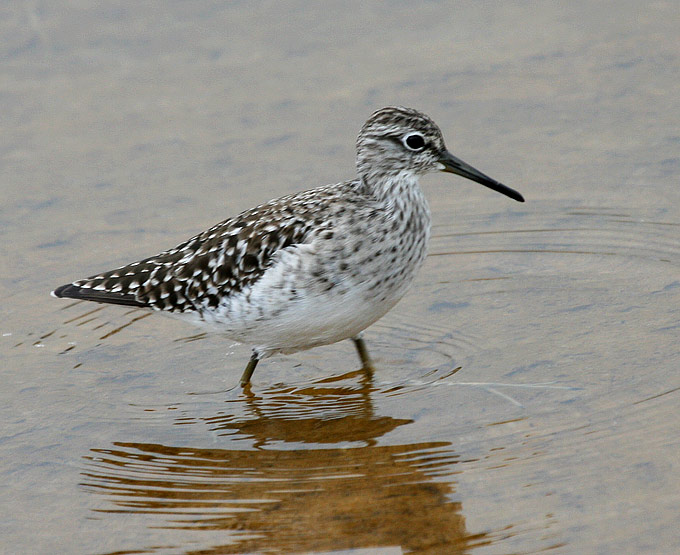





Eocheong Island, April 9
Cloud and mist in early morning was followed by continuous warm sunshine. Again, 45 species recorded on the island. Areas covered included the lighthouse road and also "pine ridge".
Very little change birdwise, although a slight general decrease in numbers.Most noteworthy was the arrival of 7 Grey-faced Buzzard: also new on the island were 2 Pacific Swift, 2 Pale Thrush, 1 Eurasian Skylark, a Mongolian Gull and a Red-breasted Merganser.
There are about 30 Vega Gull in the harbor, most now with only slightly streaked heads, 7 Taimyr Gull, and 2 Temminck's Cormorant.



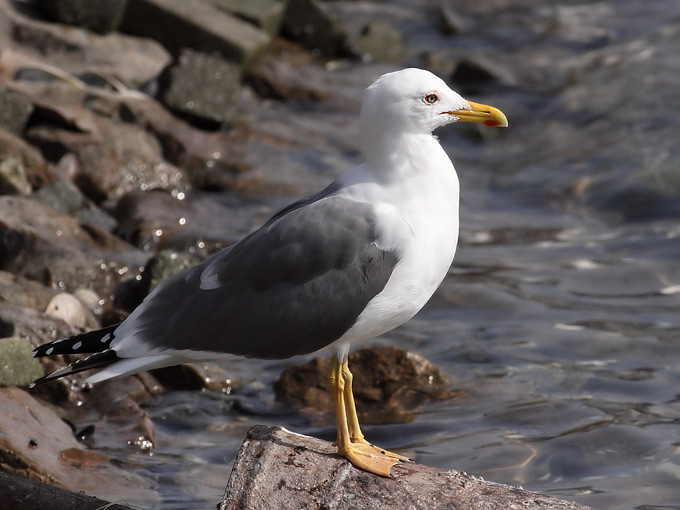
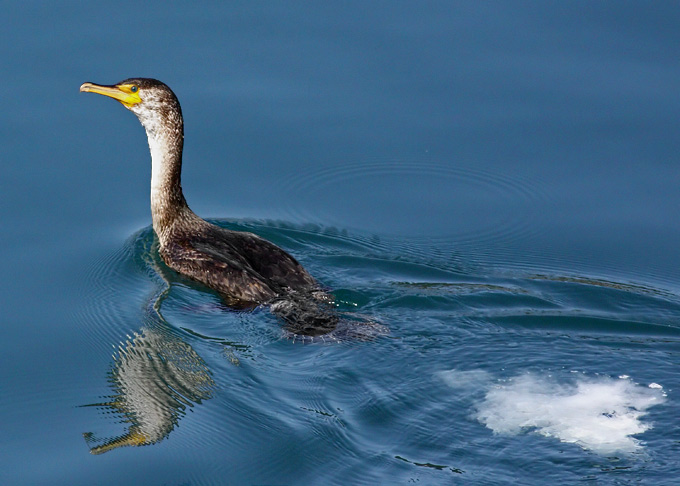
Junam/Dongpan Reservoirs, April 9
Increasingly quiet in the area as spring progresses, the only birds of note today were 4 Japanese Waxwings still, 1 summer male Pallas's Reed Bunting, a male Great Spotted Woodpecker, 3 Barn Swallows, one Grey Wagtail, c.30 Dusky Thrushes, 3 Gadwall, 3 Common Snipe, a pair of Little Ringed Plover (with the male performing a display flight), and a single Green Sandpiper.
Eocheong Island, April 8
Continuing dry and cool, with 45 species logged. This included a visit to the previously unexplored wooded headland on the other side of the harbour.
Definitely new in this morning were 2 Common Sandpiper,3 Grey Wagtail, a Little Ringed Plover, 2 Gadwall, 1 Eastern Great Egret, an Ancient Murrelet and 1 surprise Red-necked Grebe.
In areas which were not visited yesterday, 2 Hoopoe, 3 Hawfinch, 22 Brambling, 11 Goldcrest, 6 Coal Tit, and a Peregrine.
About 70% of the island's (non-native) pine trees have recently died due to a sudden insect-related disease. They are being gradually stripped from the hillsides by a team armed with chainsaws- unfortunately scaring off birds with noise and disturbance. Other species noted for the first time on this trip included 2 Common Rosefinch and 2 Oriental Turtle Dove: Japanese and Korean Bush Warblers were singing in the early morning. Also noteworthy, a male Long-tailed Rosefinch.
Sample numbers of birds counted include e.g. 17 Siberian Stonechat,9 Daurian Redstart, 6 White Wagtail and 5 Blue Rock Thrush.


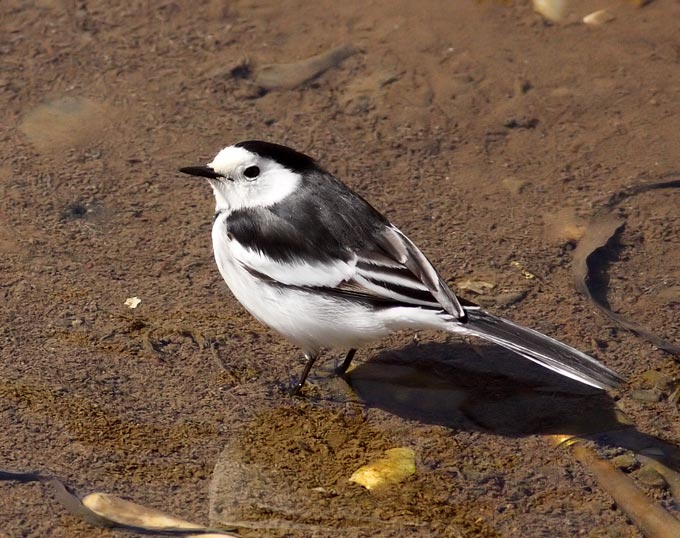

Socheong Island, April 8
Continuing clear and “warm”. Repeat survey of the eastern half of the island found much reduced numbers of e.g. chats and thrushes compared to the day before, and increased numbers of both Coal and Eastern Great Tits (some of which spiralled high, ready to migrate) and also of a couple of species of bunting. Species of most note included a Red-necked Grebe (apparently first for Socheong), the first Pallas’s Leaf Warbler (2) of the spring, and the same or another Long-tailed Shrike – this one in First Village.
Eocheong Island, April 7
Fine, sunny and cold: best of 32 species seen during afternoon on the Island, a Greater Short-toed Lark and early Chinese Egret.Most plentiful of passerines were Dusky Thrush (41), White-cheeked Starling (28), Siberian Stonechat (14), Yellow-throated Bunting (11) and Red-flanked Bluetail (9).
Construction is underway in the central "valley", formerly the best patch of habitat on the island. Although the stream is still intact (for now at least), there is construction disturbance all around it as well as along the edges of the dam- which is reducing the quality of the birding here.
Otherwise present were 3 Red-billed Starling, 2 Black-throated Loon, 4 Great Crested Grebe, a Barn Swallow, 1 Green Sandpiper, a Grey-backed Thrush, varying numbers of Daurian Redstart, Taimyr Gull, Oriental Greenfinch, Blue Rock Thrush, Naummann's Thrush, Brown-eared Bulbul, Grey Heron, Black-crowned Night-heron, Eastern Great Tit, Black-faced Bunting, Temminck's Cormorant, Bull-headed Shrike, Winter Wren, leucopsis White Wagtail, White's Thrush, Vega and Black-tailed Gulls, Most unexpected, 1 female Long-tailed Rosefinch.


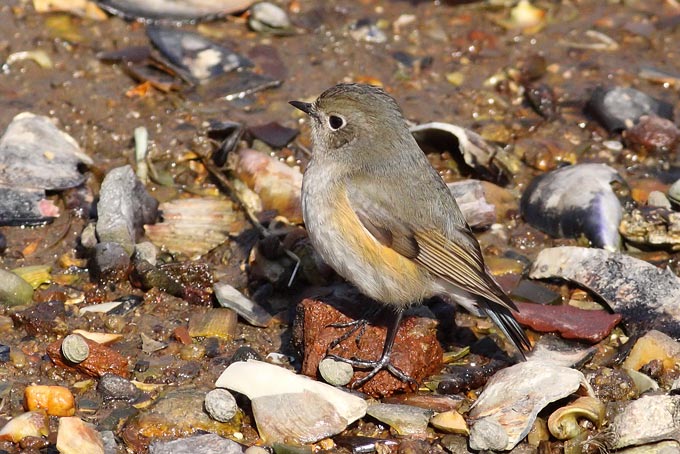

Socheong Island, April 7
A full-island survey in beautifully sunny and rather calm conditions, with temperatures for the first time this spring reaching 10C (probably the warmest day since December or even mid-November?). In total, 52 species logged with most numerous Brambling (164) and Red-flanked Bluetail (137). Further highlights included a probable glimpse of the Black Redstart again, 71 Grey-faced Buzzard, the first Black Kite (2) and Dusky Warbler (1) of the island’s spring, and a Long-tailed Shrike at Fish Farm – the first record of this species on Socheong.
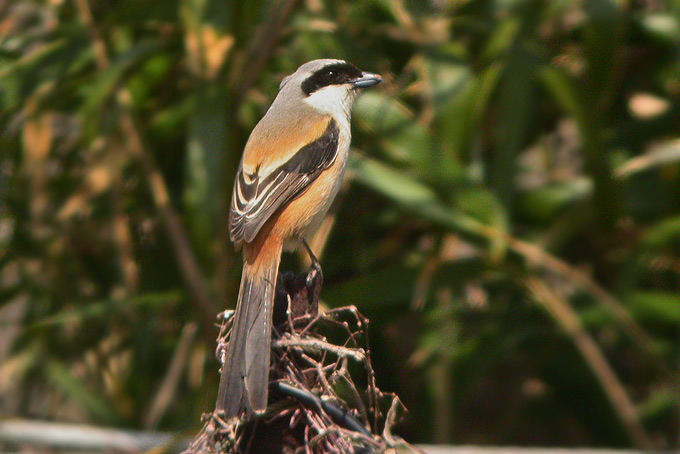
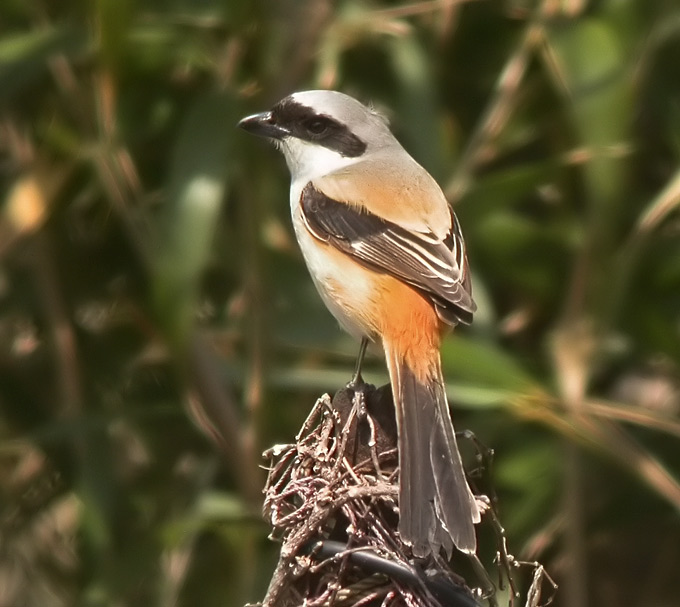
Socheong Island, April 6
Day one of the second three-day island census, with highlights limited to a Far Eastern Oystercatcher going east, one or two Light-vented Bulbul behind what little remains of the old school area, seven Grey-faced Buzzard and the first Eurasian Kestrel, Northern Goshawk and Red-throated Pipit of the island’s spring.
Socheong, April 5
Little time spent in the field, with highlights a Green Sandpiper and a flock of curlew heard going east at night: why do curlews seem so regularly heard here compared to other offshore islands?
Seogwipo, Jeju island, April 5
A sunny and cool late afternoon in Seogwipo's harbor. Three Little Grebes were seen - 2 in summer plumage, and 1 still in winter plumage. Several Great Crested Grebes were also near the harbor, in summer plumage. One Arctic Loon, one Pacific Loon and a Red-throated Loon floated lazily close to shore. The Pacific Loons was oiled, and was vainly trying to peck the oil out of its feathers. The Red-throated Loon was later seen laying on the sand - something I've never seen a Loon do before. A pair of Pacific Reef Herons were seen engaging in courtship behavior - the male spreading out his wings and displaying his nuptial feathers, until the female flew away - a process that was repeated several times. The female was noticeably smaller, and was a paler gray color than the male.


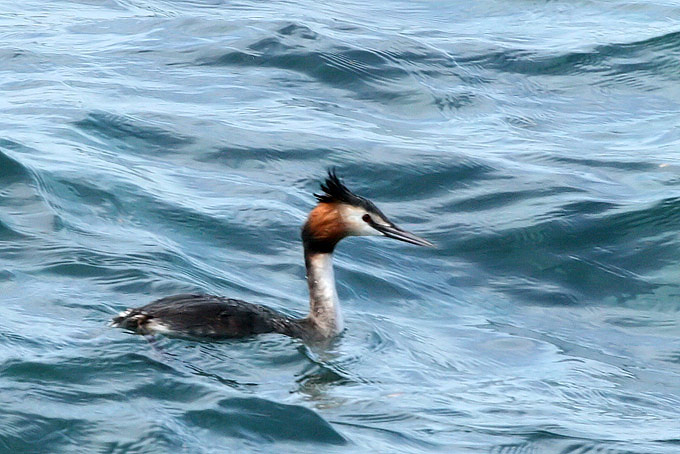
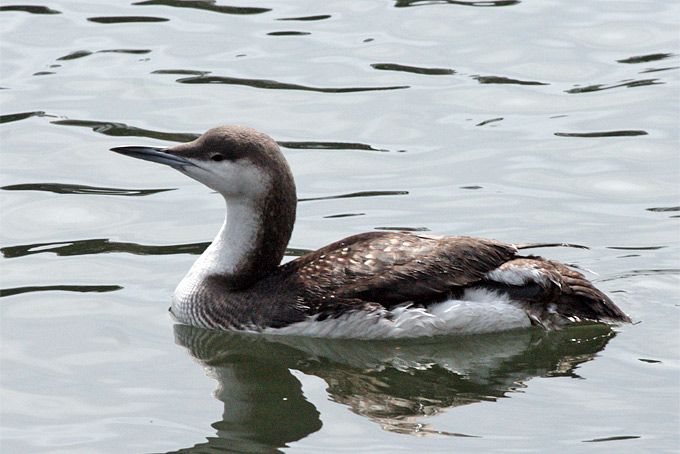
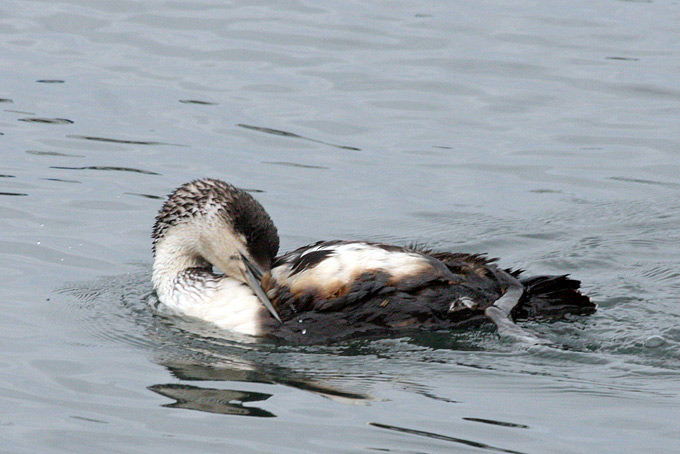



Socheong Island, April 4

Still continuing very cold: ca +2C at dawn, rising only to 7C or 8C in the afternoon. Much reduced numbers of most species, with highlights four Chinese Blackbird, the same Asian and two Greater Short-toed Larks, and best of all a male Black Redstart – a first for Socheong – which unfortunately seemed mostly to favour an area now largely off-limits.
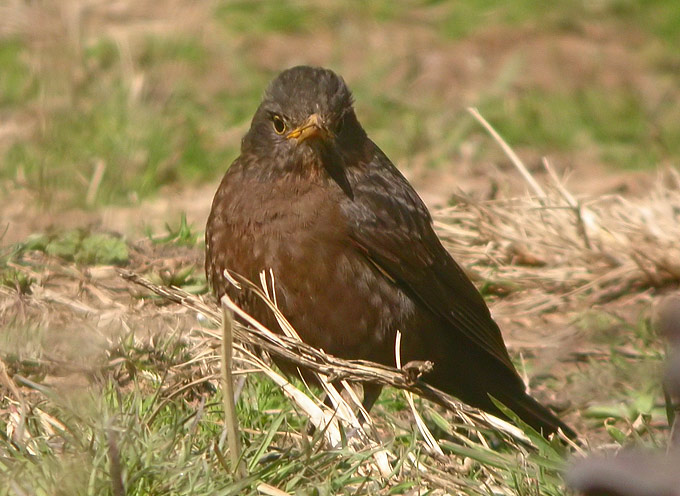


Cheju-do and Ferry, April 2 and 4
One main reason for this trip was to add to last autumn’s (limited) survey of the waters between Mokpo and Cheju. The ferry journey was relatively uneventful, with a few Arctic Loons and (interesting to note at this early date) about 200 Streaked Shearwaters.
On the afternoon of the 2nd I visited (another main reason) the Arboretum and quickly found its leaf-hued celebrity, the White-bellied Green Pigeon. Other birds included scores of heard Japanese Whiteyes, a few Pale Thrushes and Hawfinches, many Common Pheasants, and a small flock of Oriental Greenfinches.
On the 3rd I met up with Matt Poll and Kim Young Ho; for details see Matt’s report.
April 4: I returned to the Arboretum, saw several hundred Japanese Whiteyes, a few Eurasian Jays, a Pheasant in a Cherry Tree, more Oriental Greenfinches, and the tracks of a deer, but I did not see the pigeon. The return ferry had much the same as the incoming trip but with somewhat fewer shearwaters and a few more loons.

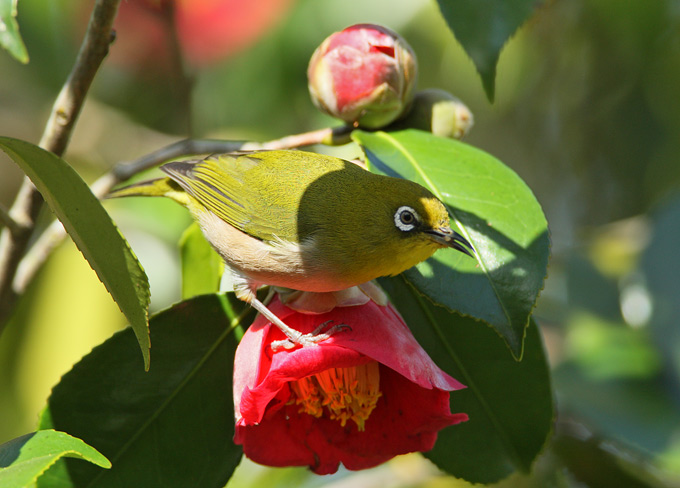
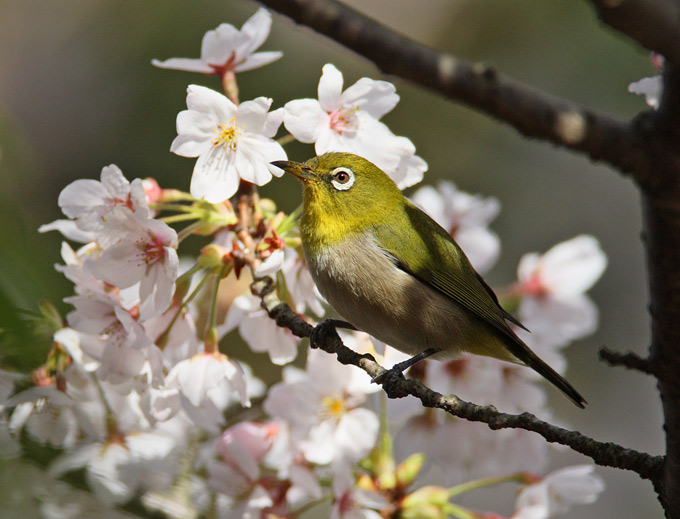
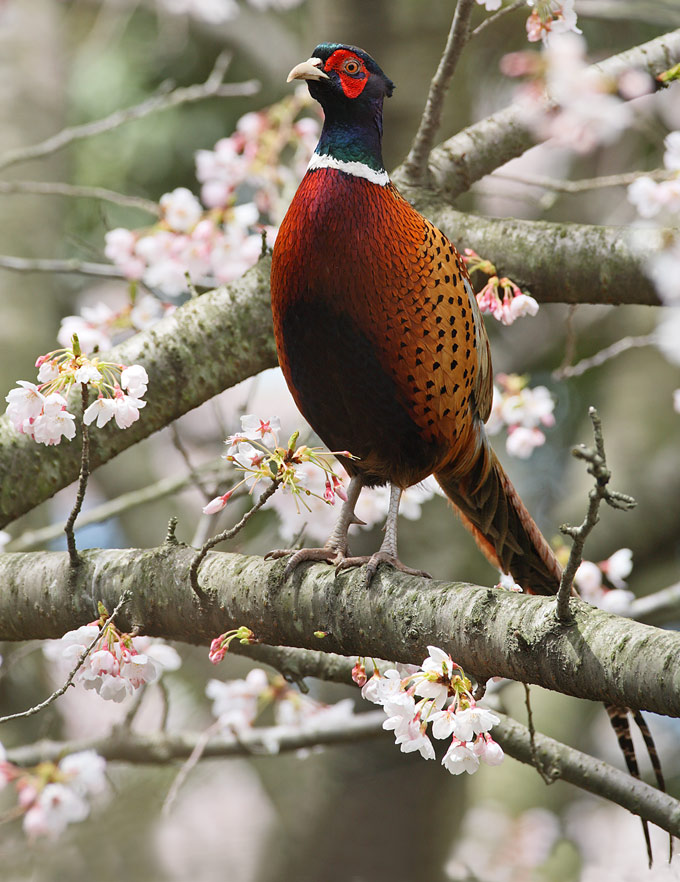
Taejongdae, April 4
In calm, sunny conditions with a high temperature of about 16C, there was plenty of activity among the resident birds, as spring feels to have finally arrived. Japanese White-eyes fed hungrily in the flowers of blossoming trees, Yellow-throated Buntings were in song, and a pair of Blue Rock Thrushes staked out their territory on a rocky outcrop. However, perhaps unsurprisingly given the benign weather conditions, evidence of migration was sparse, with the emphasis on quality rather than quantity. Only 4 thrushes were seen, but these were of 4 different species: a male Eyebrowed Thrush and a male Grey-backed Thrush were sometimes to be seen feeding side by side in and around the gully behind the lower temple, allowing for excellent comparison. It was yet another of those moments when I wished I had a better camera. Nearby there was a White's Thrush in exactly the same spot as last Saturday's bird, perhaps likely to be the same individual. Not far from the road near the lookout point, a Pale Thrush foraged in leaf litter, apparently unconcerned by the huge numbers of local people walking past. 4 Arctic Loons were on the sea, and c.5 Black Kites wheeled overhead.
Uiwang, April 4
The morning turned out to be fantastic for birding with mostly sunny skies and a slight overcast to top it off. Lots of activity on and around the lake. Highlights are as follows: 2 Common Stonechat, 2 Brambling, 1 Black-faced Bunting, 6 Rustic Bunting, 6 Common Reed Bunting, 2 Eurasian Kestrel, 8 Grey Heron, 2 Little Egret, 6 Intermediate Egret, 2 Eastern Great Egret, 2 Eurasian Wigeon, 150 Northern Shoveler, good assorted mix of Mallard, Spot-Billed duck and Eurasian Teal, 12 Coot, 2 Dusky Thrush, 8 Naumann's Thrush, 6 Daurian Redstart, 2 Great Cormorant, 8 Common Snipe, 16 Mandarin Duck, 20 Eurasian Skylark, 7 White Wagtail, 4 Great Creasted Grebe, 4 Little Grebe, 4 Japanese Pygmy Woodpecker, 2 White Backed Woodpecker, and a somewhat confiding pair of two female Tufted Duck.


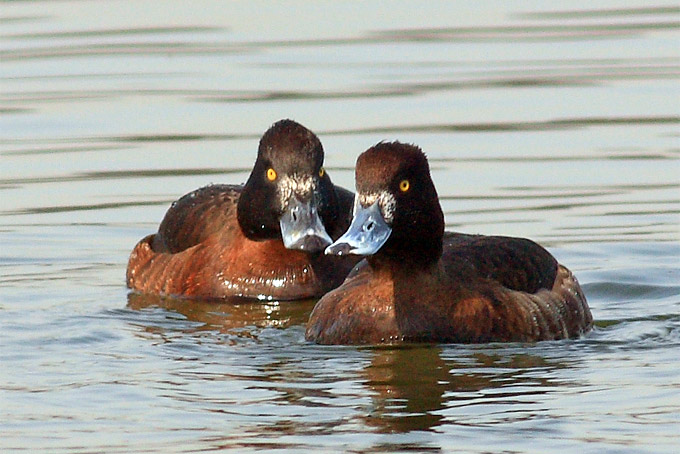
Socheong Island, April 3
A good arrival of migrants apparently throughout the day meant that a survey of the whole island found 57 species, including a Tree Sparrow and a Grey Plover (both very scarce here) a good range of thrushes (including the island’s first Pale and Grey-backed Thrushes of the spring, a Chinese Blackbird, 117 Naumann’s and a single Red-throated Thrush), three Greater Short-toed Lark and much less expected an Asian Short-toed Lark – apparently coming only a day after one was photographed on Weiyeon Island some 200km or so to the southeast.
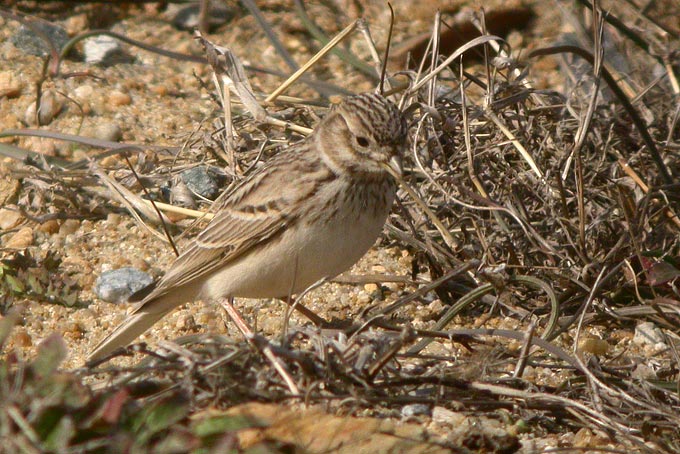

Photo © Nial Moores
Jeju island, April 3
A sunny and cool day for a long and satisfying day of birding on Jeju. Young Ho was both a gracious host, and an excellent source of local bird knowledge, as usual. At Gangjeong, a large raft of Great Crested Grebe, most in the process of assuming gorgeous summer plumage, was seen at the proposed site for an 'eco-friendly' naval base. Also, a huge (200) collection of Loons drifted and fed just offshore - mostly Black-throated, with some Pacific mixed in. At Jungmun, good looks at a singing Japanese Bush Warbler. Vocal and brightly-marked Grey-capped Greenfinch were teeming in the bushes, and a Black-faced Bunting was also spotted.
At a nearby stream (where in recent years a female Plumbeous Redstart has been seen!), Grey and White Wagtails, Great Tits, a Common Kingfisher, and Yellow-throated Buntings were seen. Near Sagye-ri, a Little-ringed Plover, and several Green Sandpiper waded though flooded fields. Also, a Hoopoe, and a Richard's Pipit.
In farmer's fields near the remains of a World War 2-era Japanese airfield, best for the day was a vividly-marked but secretive Long-tailed Shrike, which showed well as it perched briefly. A probable second one was later seen flying fast and very low to the ground (MP only). Also in these fields, several prominently perching and vocal Zitting Cisticola, at least 40 Siberian Stonechat (mostly male), a Japanese Quail, a Dusky Thrush, and at least 400 Far Eastern Skylarks.
A confusing collection of Thrushes zipped secretively through the tree-tops of nearby pines. Several Pale Thrush were spotted and heard. The striking orange and white chest of a Brown-headed Thrush was glimsped (MP only), as was the sharp white supercilium of Naumann's Thrush - RN only (rare for Jeju?). Several female Red-flanked Bluetail lurked in the underbrush.
At a small beach near Gosan on the west coast, 4 Black-tailed Godwit, a Great Knot, a Little Ringed Plover and a Kentish Plover fed on the tidal flat, until flushed by a low-flying Kestrel. Sadly, a dead oil-stained Ancient Murrelet was found on the beach. At Yeongsu, a Black-winged Stilt was spotted near a large assortment of Egrets. At most locations, Barn Swallows were flying low in loose groups of 10-20 birds. Several Pacific Swift were seen mixed in with the Swallows. Near Moseulpo, about 50 White-cheeked Starlings bowed power lines, with at least one Red-billed Starling seen mixed in among them.


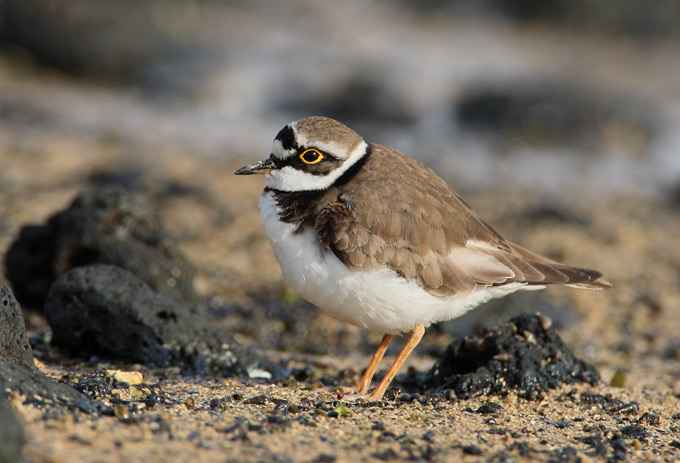





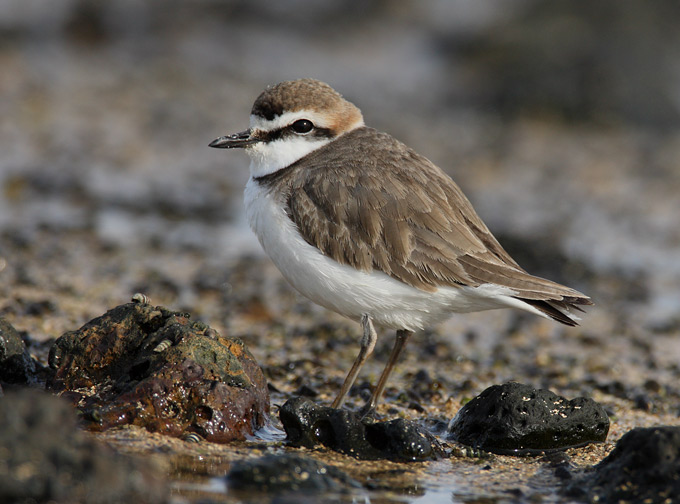
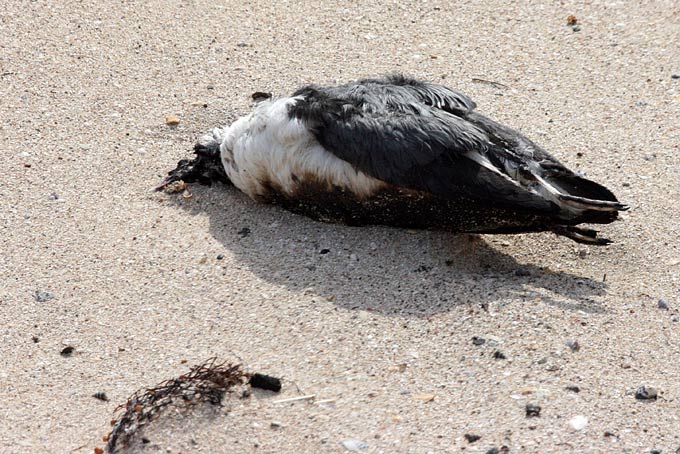
Junam and Dongpan Reservoirs, April 3
Japanese Waxwings are still present in the area, with up to 15 frequenting the line of tall trees at the southern edge of Junam, and another 4 birds in trees at the southern end of Dongpan. These birds, plus abundant Brown-eared Bulbuls, were spending much time today hawking the large numbers of airborne insects that have suddenly appeared in the fine and sunny spring weather. 500 metres south of the southern end of Dongpan, a small parcel of excellent habitat (flooded fields, marshes and ponds) held an interesting range of species - 4 Garganey including 3 drakes, 3 Common Snipe, and single Wood Sandpiper, Green Sandpiper and Little Ringed Plover. The area is close to a village and (inevitably in this part of Korea) a construction site for a new bridge and highway, nonetheless the quality of the habitat is good, and if disturbance is not too high then it will probably reward regular observation during migration periods. A long walk along the eastern perimeter of Dongpan and around most of Junam didn't produce anything exceptionally exciting, but it was good to see the first Siberian Stonechat of the year near the Junam 3rd Pumping Station, and nearby another group of Garganey - 5 birds including 4 drakes. At the other side of the reservoir, 4 Spotted Redshanks were an unexpected sight on the south-western barrage with the gulls. 30 Pacific Swifts were overhead, and lingering winterers included a scattering of Dusky Thrushes (perhaps a dozen birds in total), one Naumanns Thrush still, 48 White-fronted Geese, 28 Taiga Bean Geese, 2 Eurasian Wigeon, and 3 Rustic Buntings including a superb male in full breeding plumage.
Socheong Island, April 2
Very cold (probably only +2c) and clear at dawn, with a patchy light frost and visibility of ca. 20km due to Yellow Dust. One hour of viz migging (longer would have been too much to bear!) recorded only 8 birds moving off island: six White Wagtail and two Grey-capped Greenfinch. Survey of the western half found 40 species, with an obvious increase in Daurian Redstart (42) and Siberian Stonechat (23), two Little Bunting (personal first of the spring here), and on the sea now 10 American Scoter (today highly vocal and displaying). Of further interest, a single Light-vented Bulbul was in the main village – in the same bush as two seen back in November.
Namhae, April 2
In just a few hours around the bridge we saw nothing unusual but did encounter very good numbers of Dusky Thrush and Oriental Greenfinch. As usual, the Finless Porpoise were there to keep us entertained.
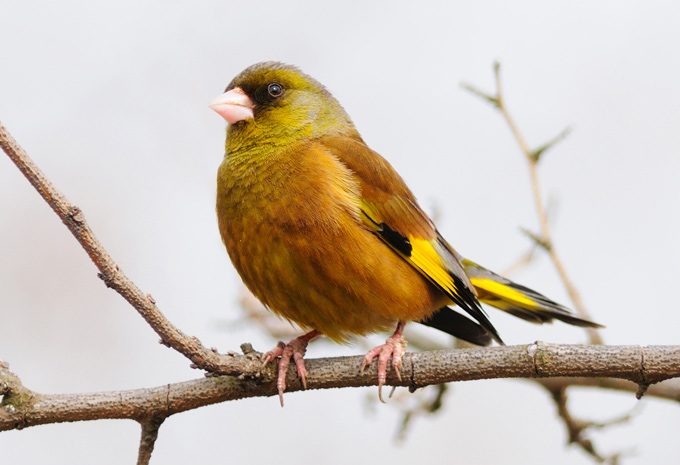
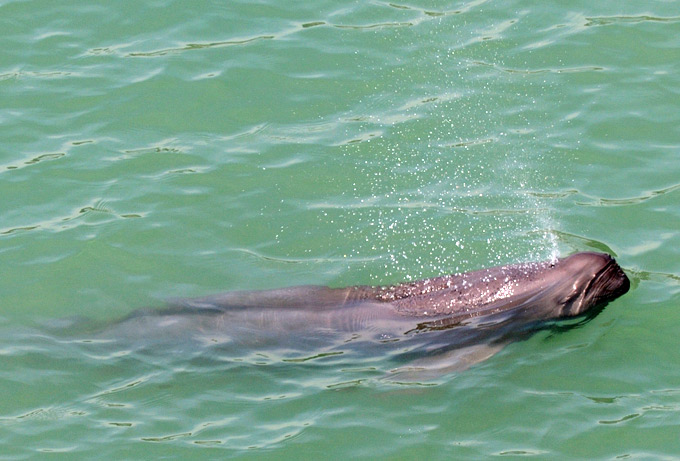
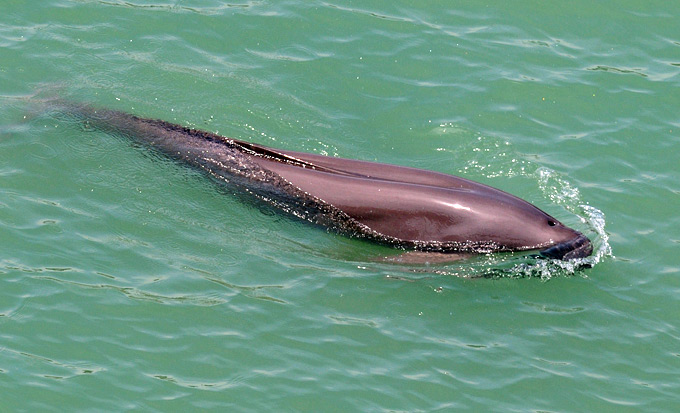
Socheong Island, April 1
Under mostly heavy overcast with a cold, strong north-easterly then north-westerly wind, 46 species logged in the east of the island (despite the appalling noise blasting out seaward from a new speaker installed at northeast point), including the personal first Grey-faced Buzzard (5) and Little Ringed Plover (1) of the spring. Further species of note included a Eurasian Nuthatch and a Pallas’s Rosefinch, with most numerous Eastern Great Tit (80), Naumann’s Thrush (30), Brambling (40), Yellow-throated (70) and Rustic Buntings (60).





